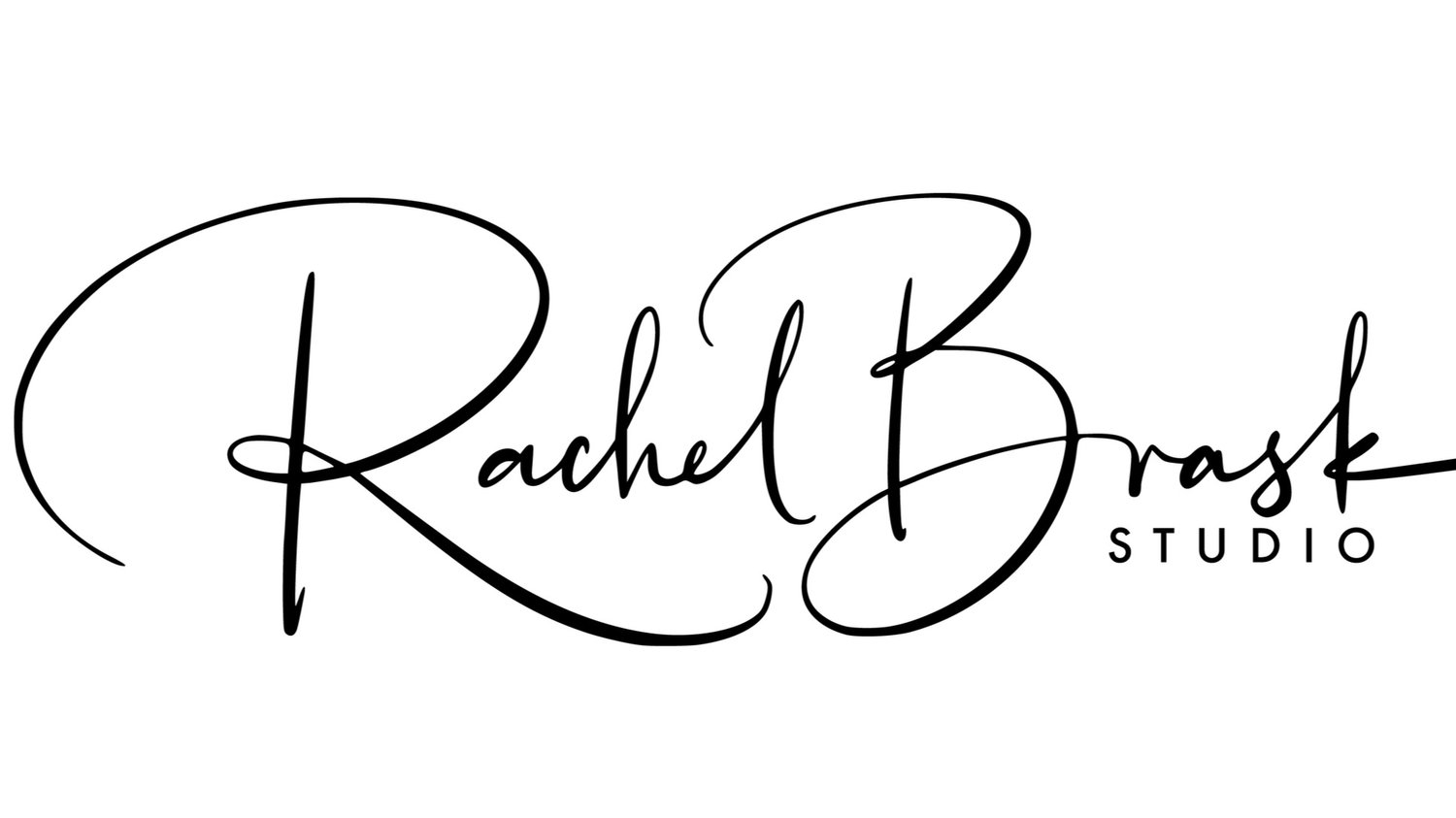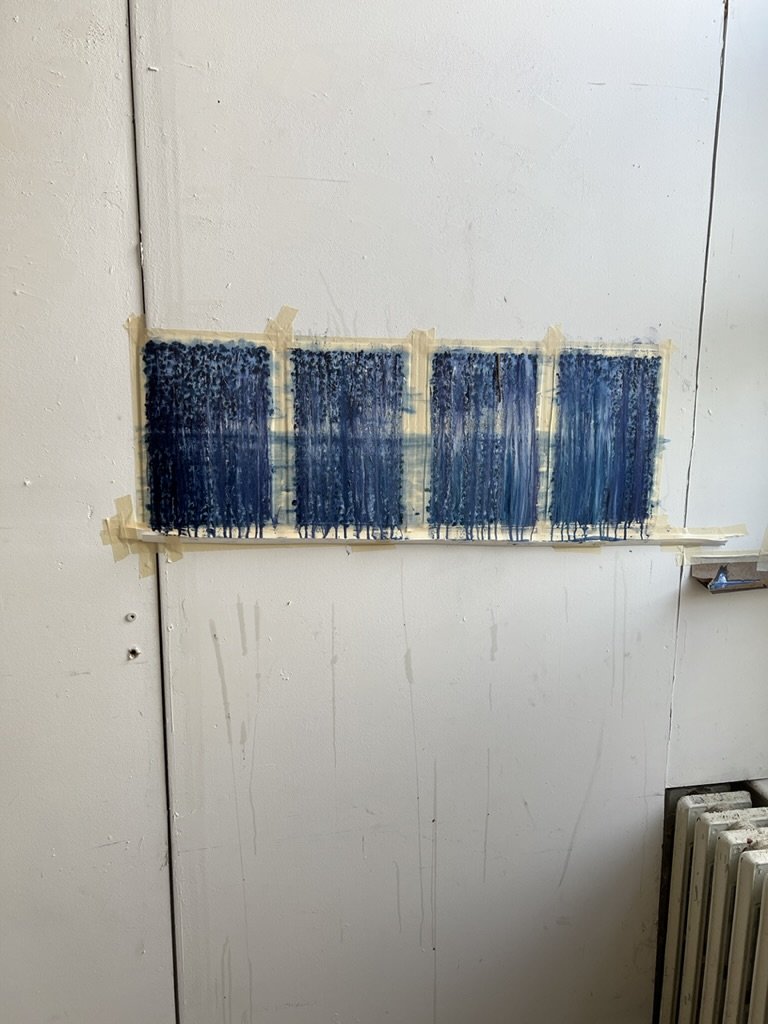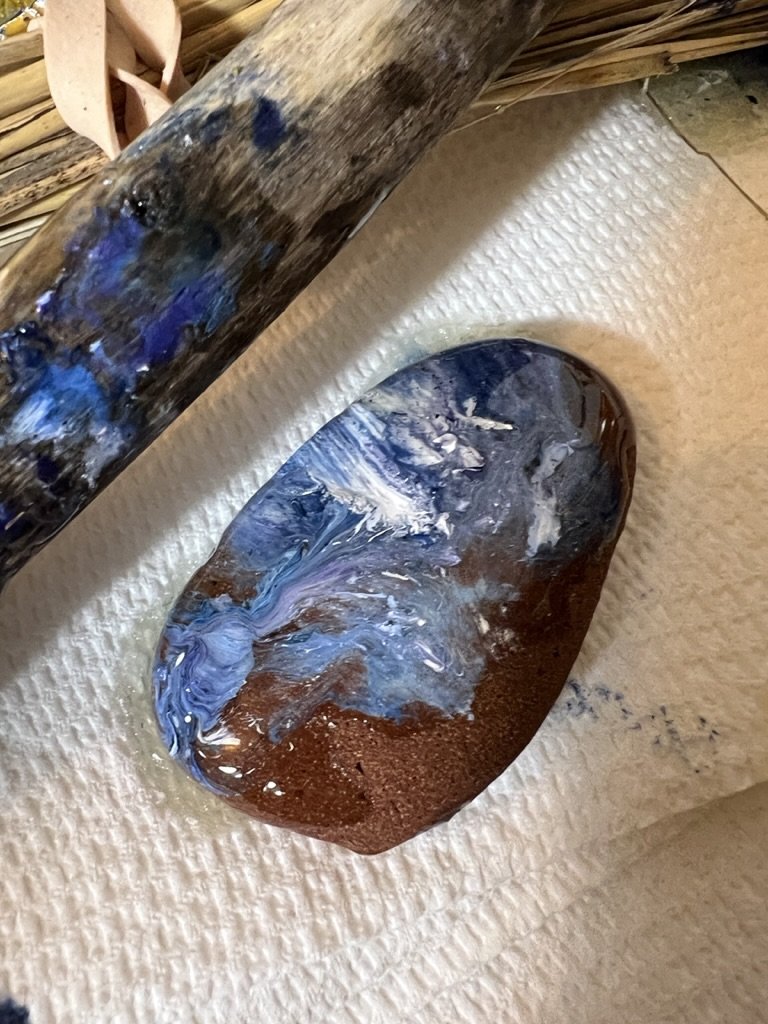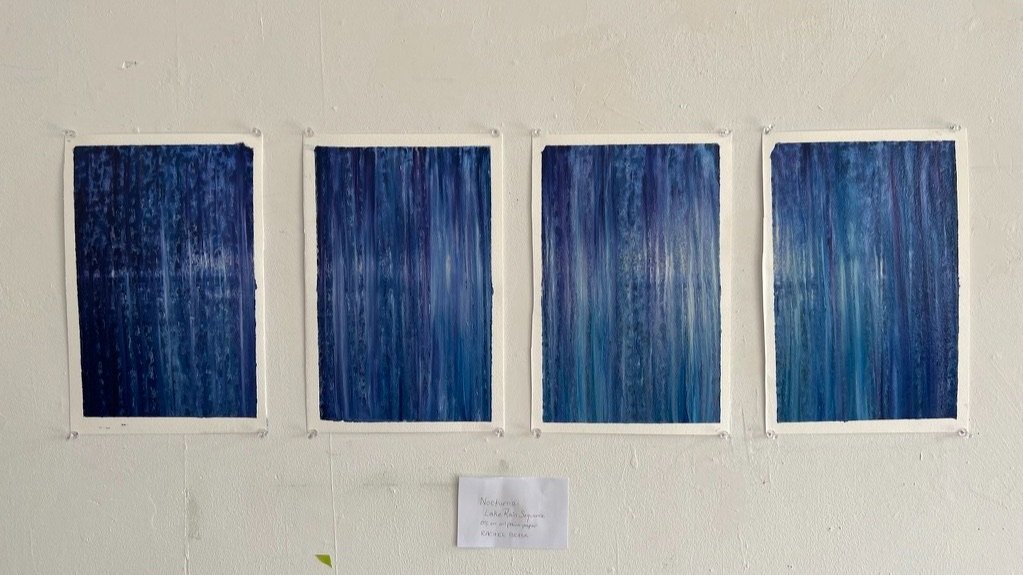Artist’s Residency Highlights: Works & Ideas
ONCE UPON WATER ART RESIDENCY: reflections, highlights & conclusions
In May 2023 Rachel Brask attended Once Upon Water international art residency at Artscape Gibraltar, Toronto Island, Ontario, Canada. She wrote a daily blog of her explorations & art experimentations (link here). This is a more condensed summary specific to the artwork she created while on residency, the results & conclusions.
Highlights:
Experiencing my first international art residency outside of the USA
Meeting and collaborating and conversing with artists from Australia, Argentina, Greece, China, Canada and the United States
Experiencing the changes in the lake’s appearance and sky every morning, daytime, and evening
Observing the movement of water and play of light
Witnessing the broad way in which all the artists approach the open theme of water in all very different and very unique ways
Seeing so many birds on and around the island
Very limited number of cars on the island, lots of walking, and therefore in a way, much more observing and slowing down
Beginnings with Oil Paint Paper
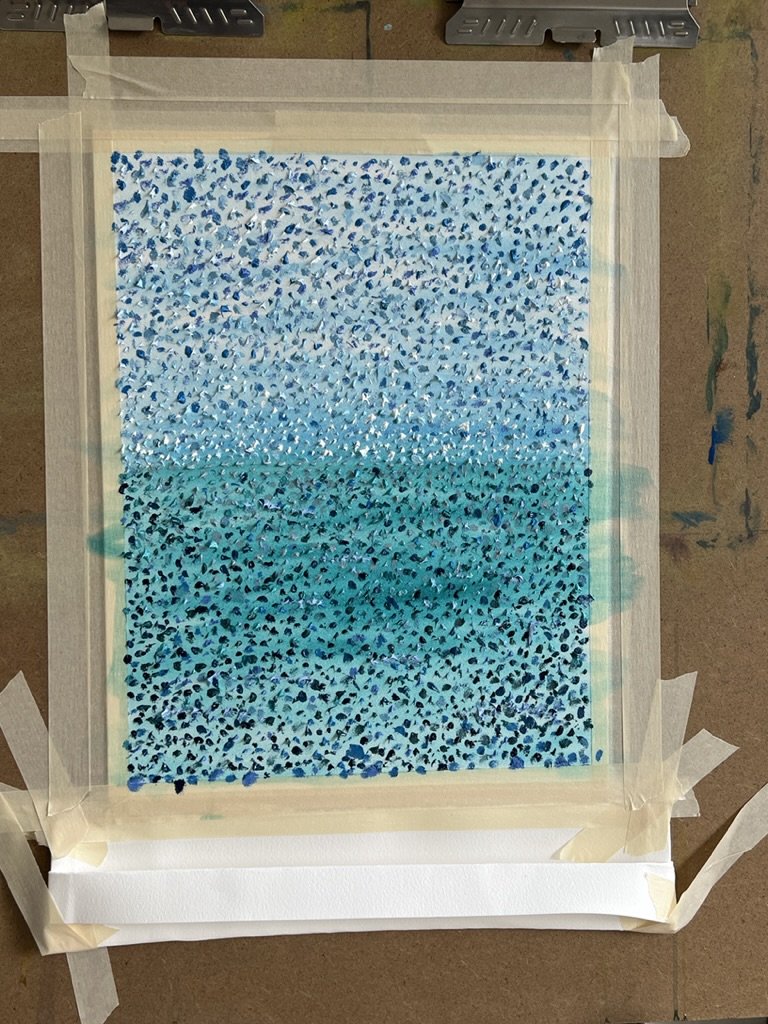
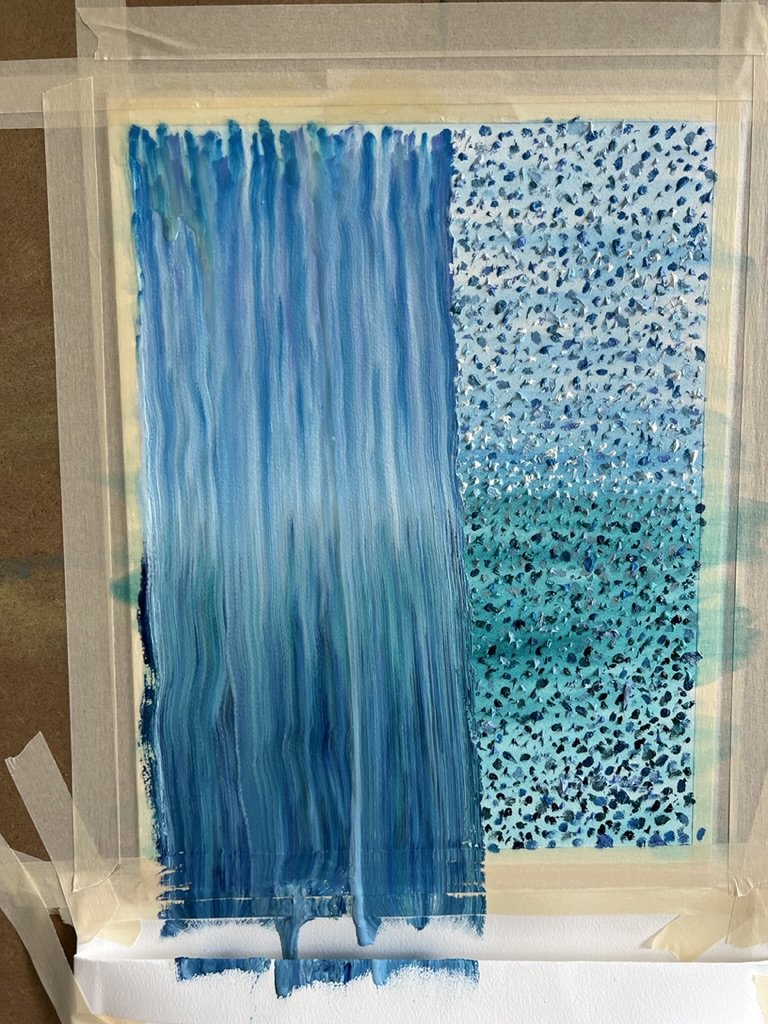
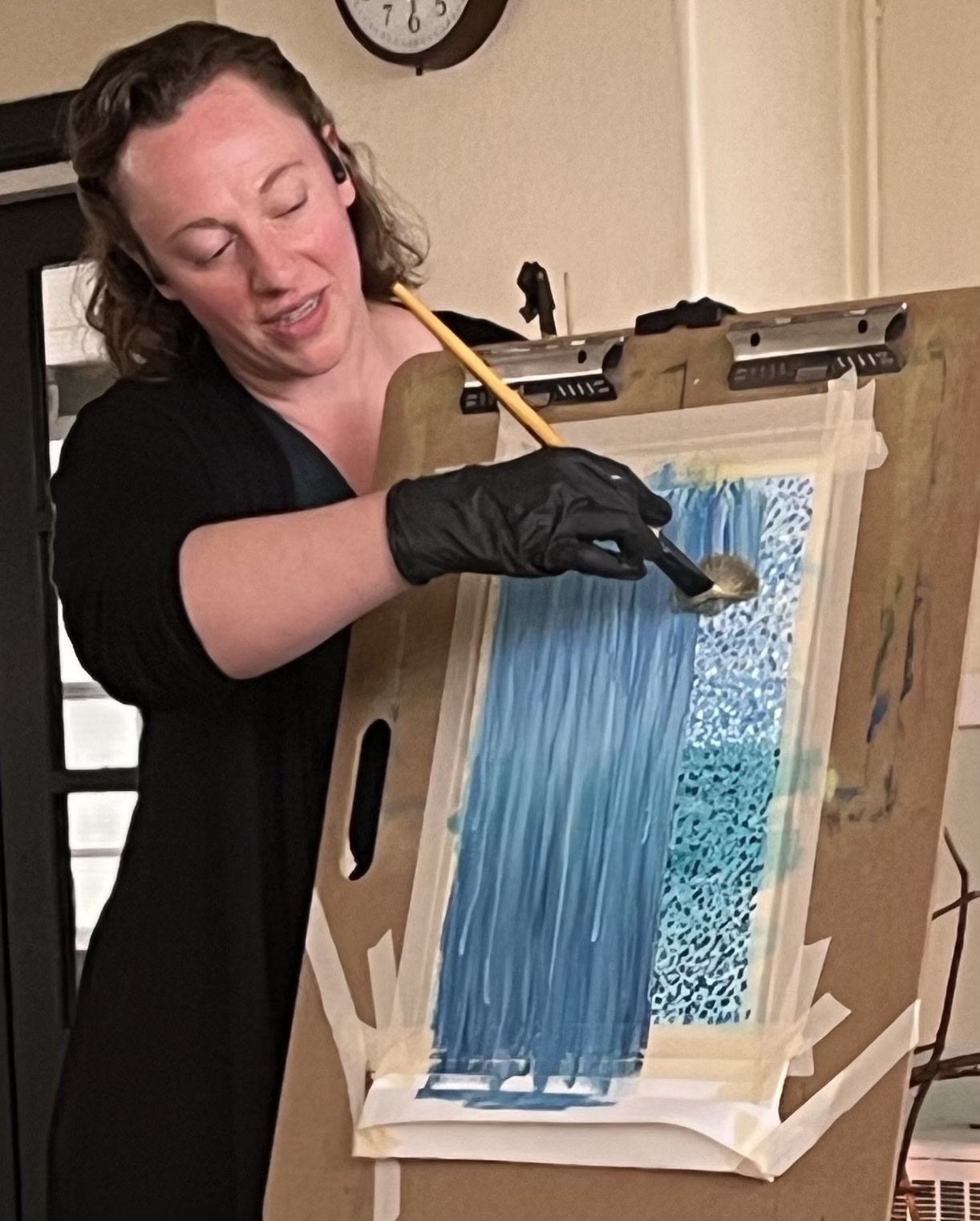
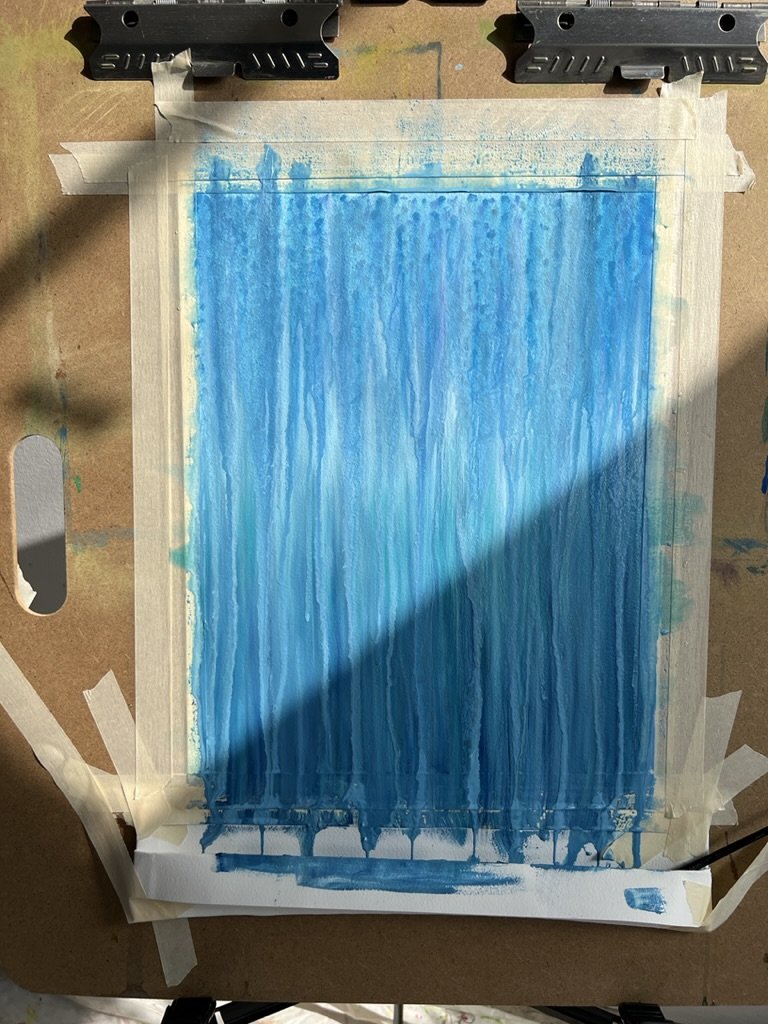
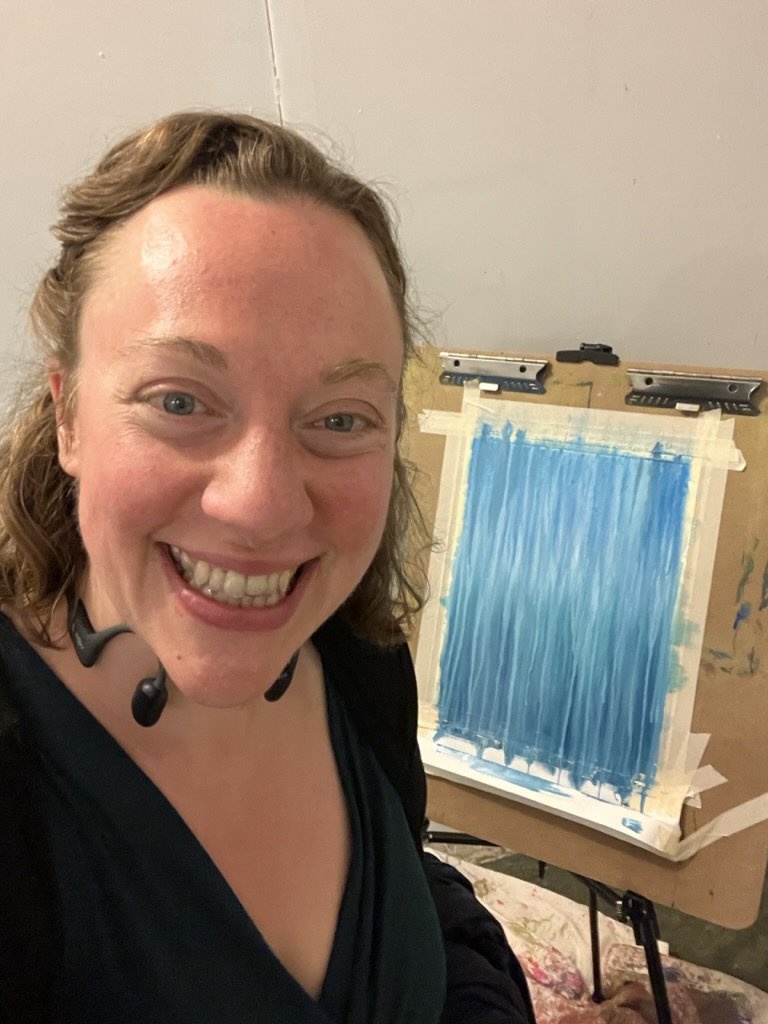
I began my artist residency without stretched canvas, while I waited for them to arrive via delivery. However, I had brought a pad of oil paint paper. Inspired by the colors of the sky and lake that day, I made a simple rain composition on oil paint paper, and also used it to show my general process to the other artists during our initial presentations of artwork.
In retrospect, there was way more friction between the oiled brush and the paper in replicating my usual process. I should have gessoed the paper first.
I also had to construct a “well” out of paper to catch the dripping oil under the painting.
Panoramic Panels & Using non-brush materials

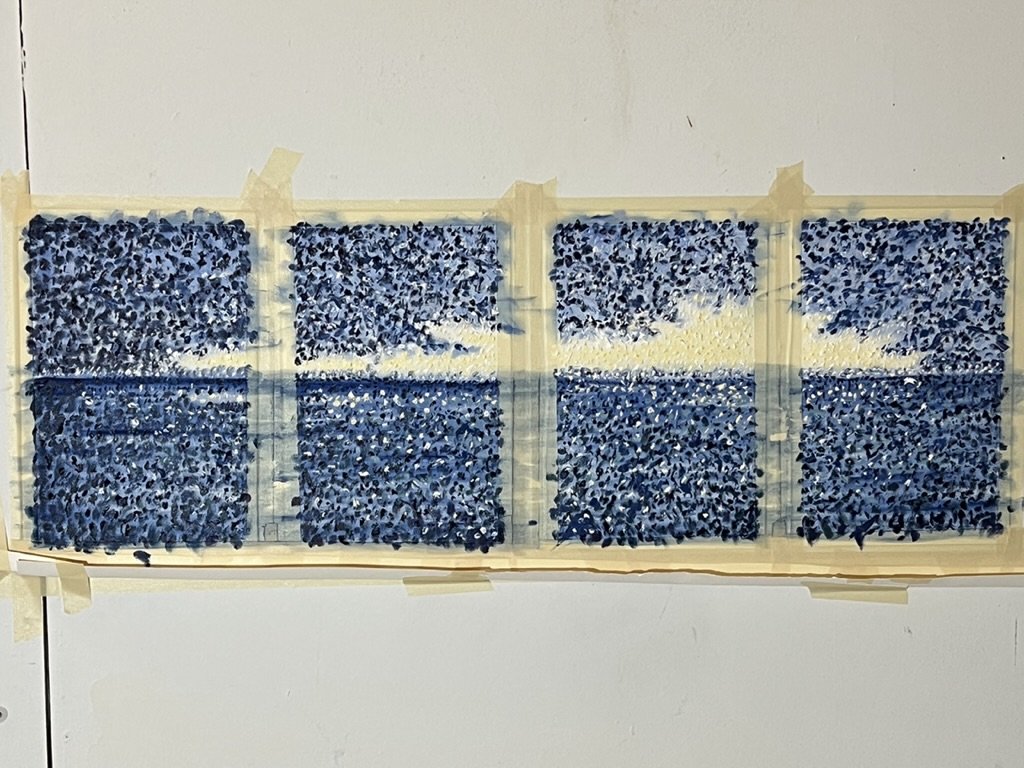
Experimented with chopping up a panoramic photo reference into four panels, painted then rained on
I’ve been obsessed lately with the colors of the late end of the day, so that’s the time of day I photographed the lake reflections after sunset had yielded to early dusk
Experimented with using different natural materials to apply the rain effect to the paint daubs: realization - not successful. Maybe it’s just the materials I chose, but too much debris got stuck in the paint, and the movement of the materials was not very smooth in dragging down the “rain oil” mix. A video of this process is in the works.
City Skyline Sunset on Canvas


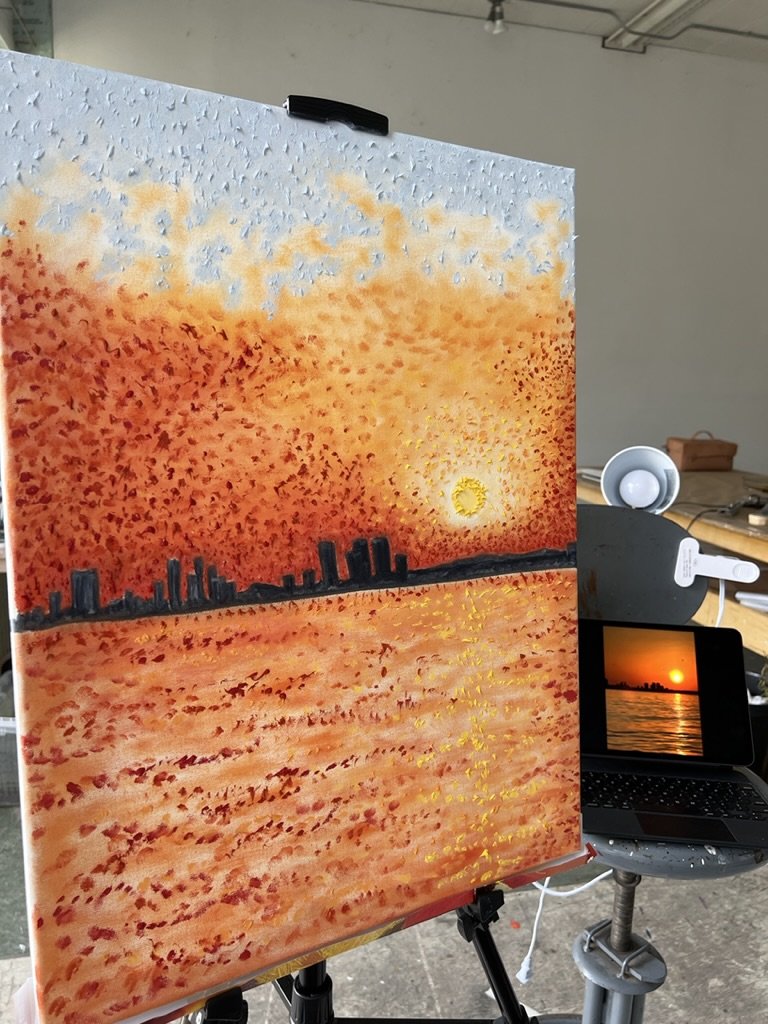
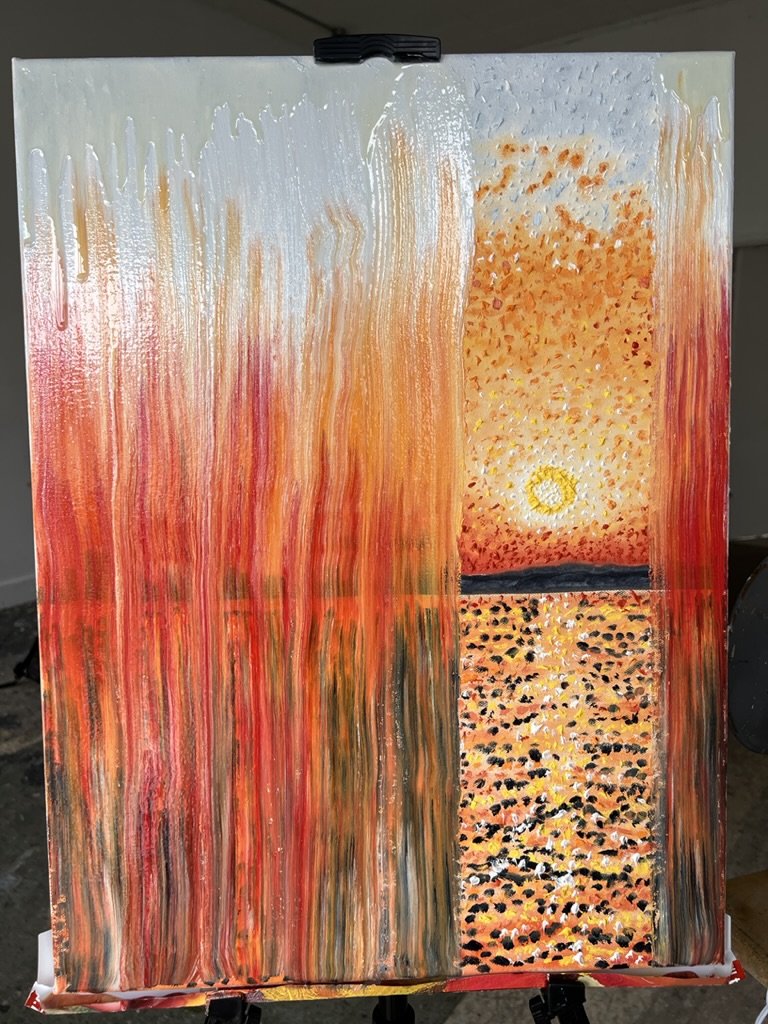
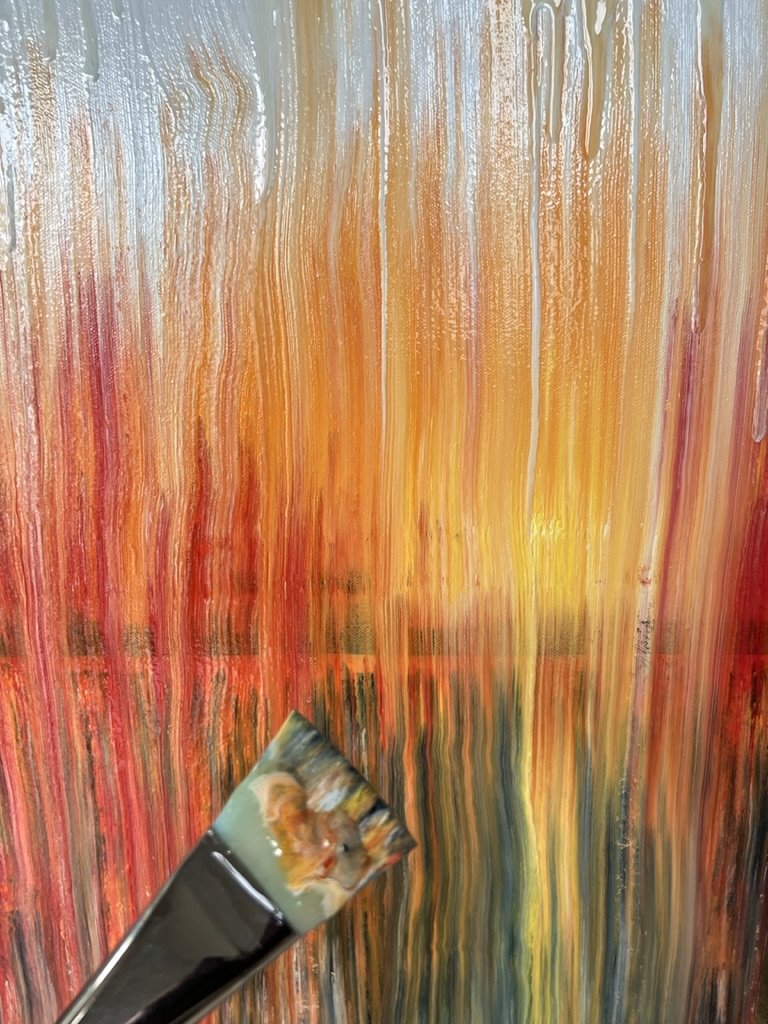
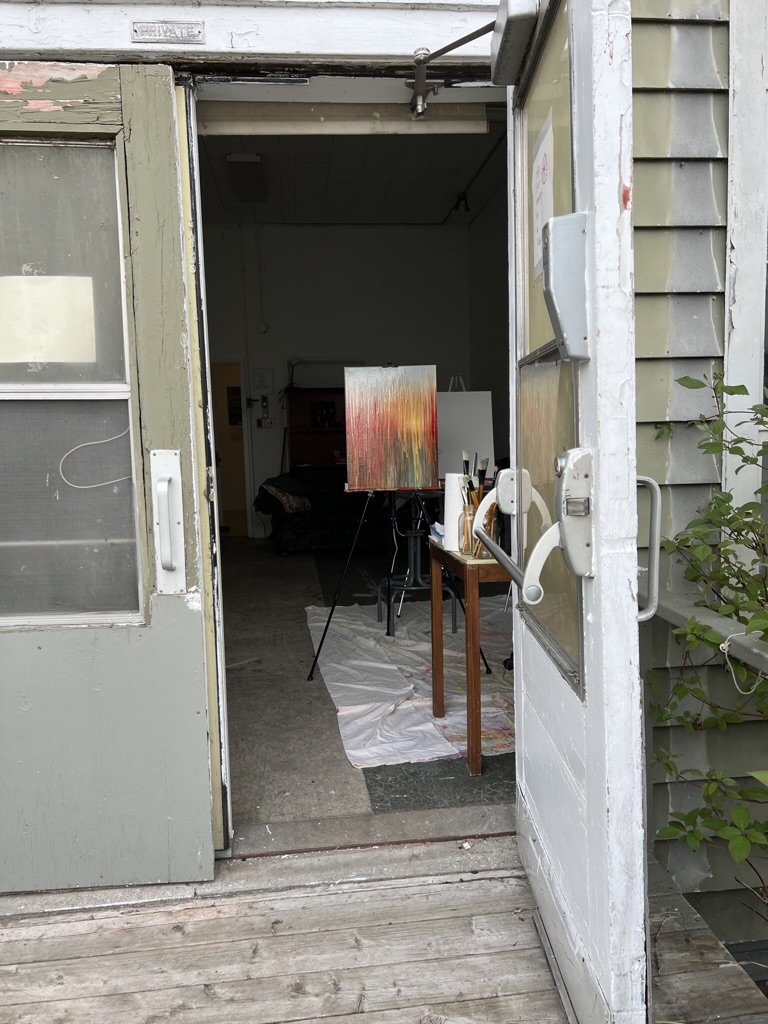

After trying several experiments with regards to different substrates and different materials, I found it comforting to return to working on stretched canvas, a home territory that I know well. This experiment focused more on creating a city skyline at sunset, an idea I’ve wanted to try for awhile. Some of the Toronto city-specific skyline did become invisible or barely invisible as a result of the raining drips, but I’m not completely opposed to the effect. If a more specific skyline landmark is needed to be more clearly visible, there are ways in which I can temper the flow to allow those buildings to be more clearly identifiable in future iterations of this idea.
Dusky Dawny Last Night Rainfall Reflections
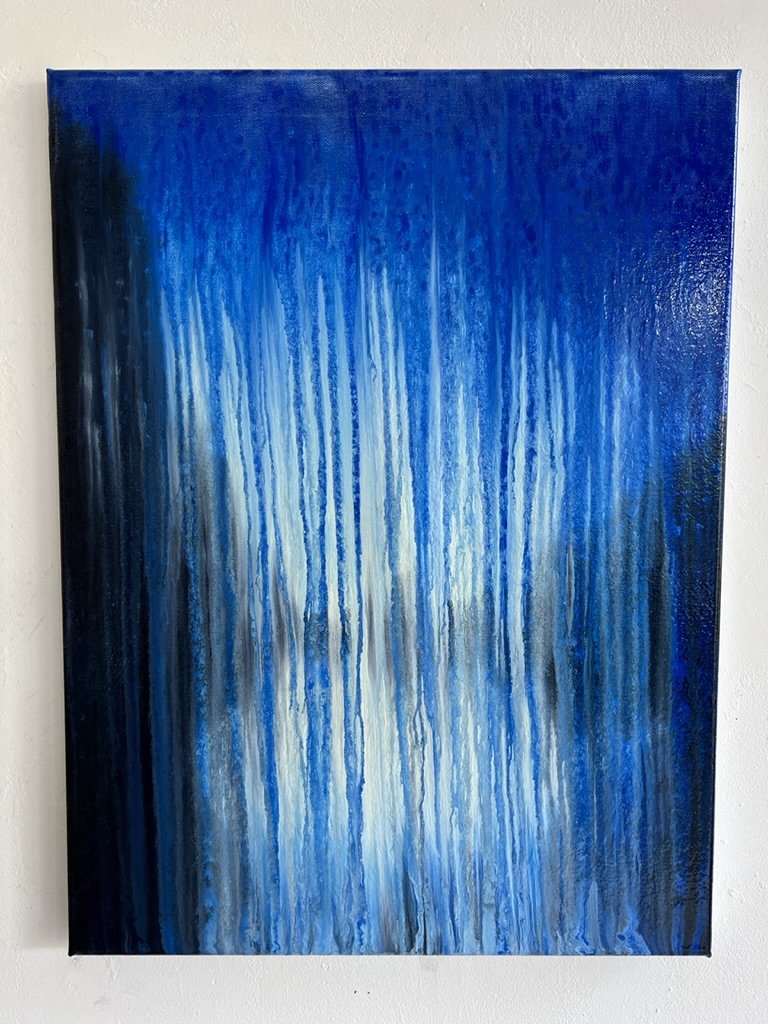
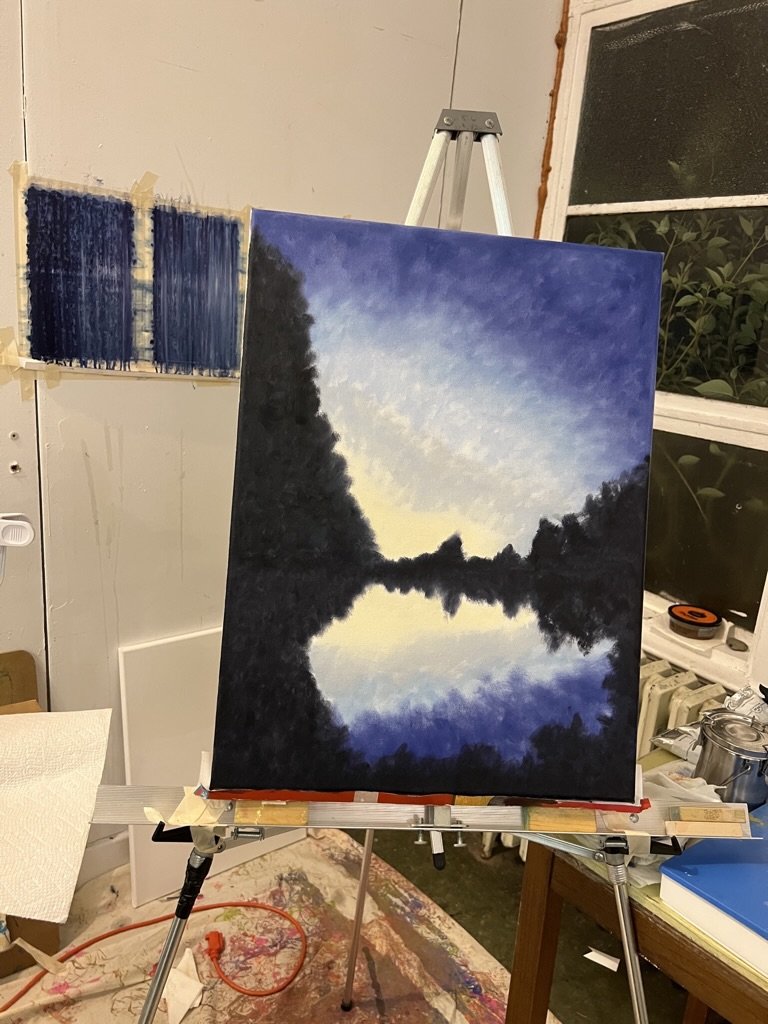
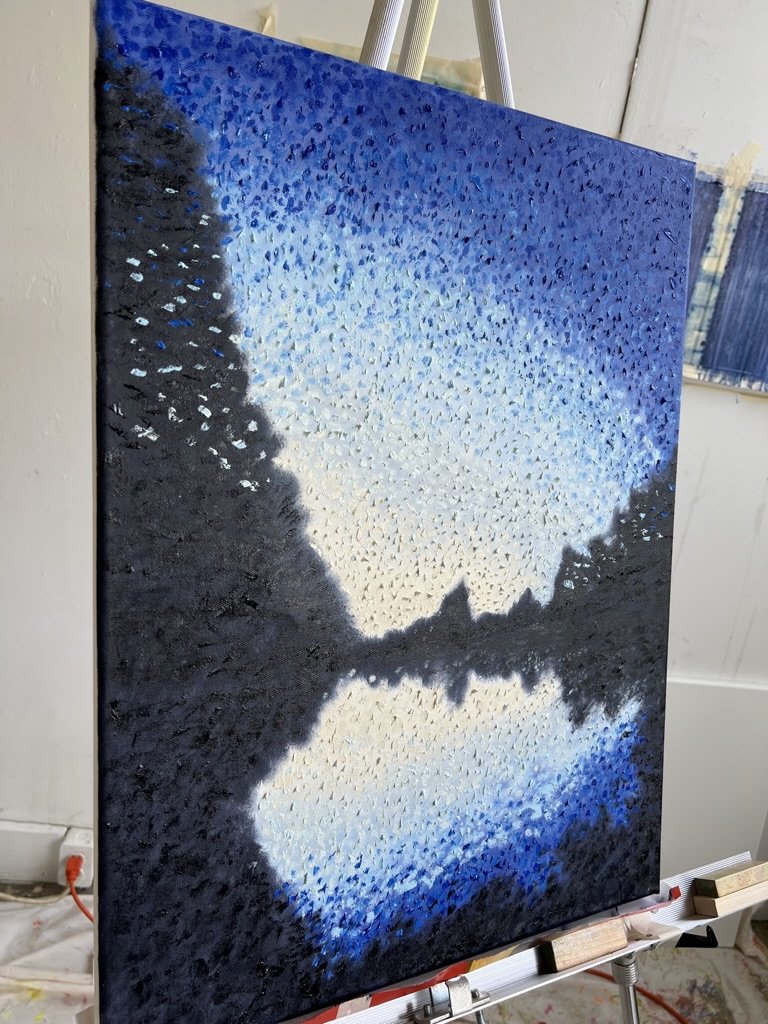
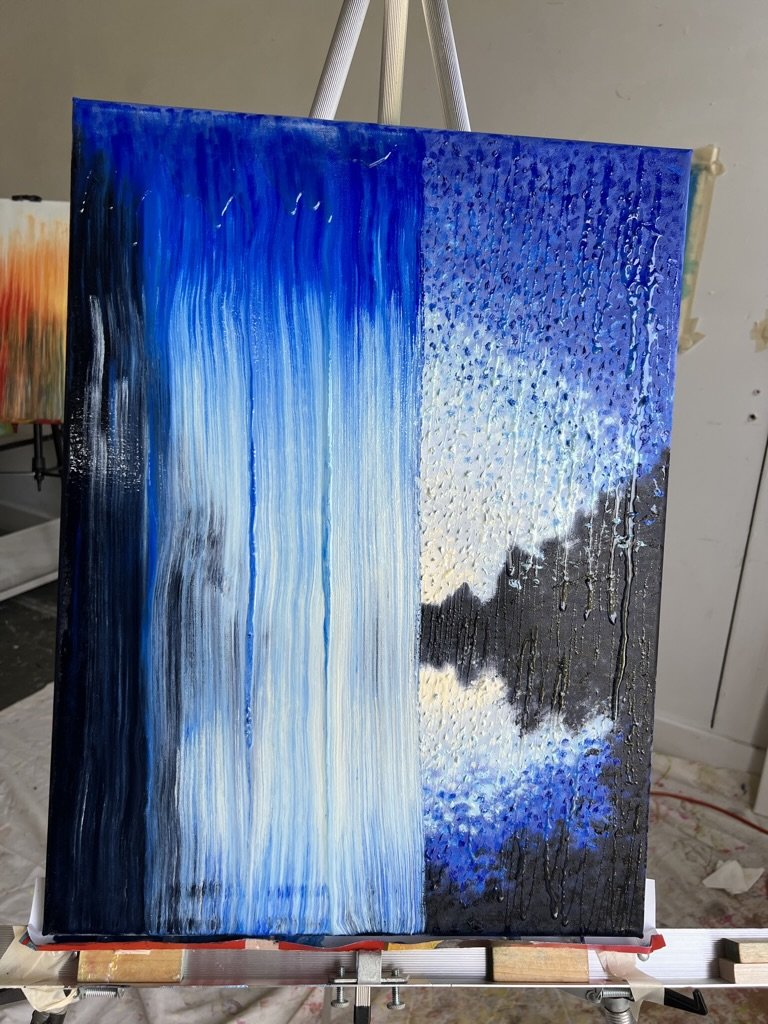



The last exhibition that I completed in March-April 2023 I had two-three pieces specifically that examined night time rain. It was essentially the first time that I had examined night rains, and those pieces seemed to be particularly resonant with viewers, listing them among their top favorites. I’ve been wanting to experiment with doing more of them.
Lately, I’ve been obsessed with the early evening blue, last-light, post-sunset dusk, lighting and reflections. I painted this composition to examine just how the contrast of the last light would go with the blues, the flow, and how clearly would the reflection read as a reflection through the rain process.
I was really pleased with the resulting painting, and I’m strongly moved to make a collection of these colors as my next body of artwork, on larger canvases, and all exhibited together.
Trust & Collaboration: Rainy Skyes
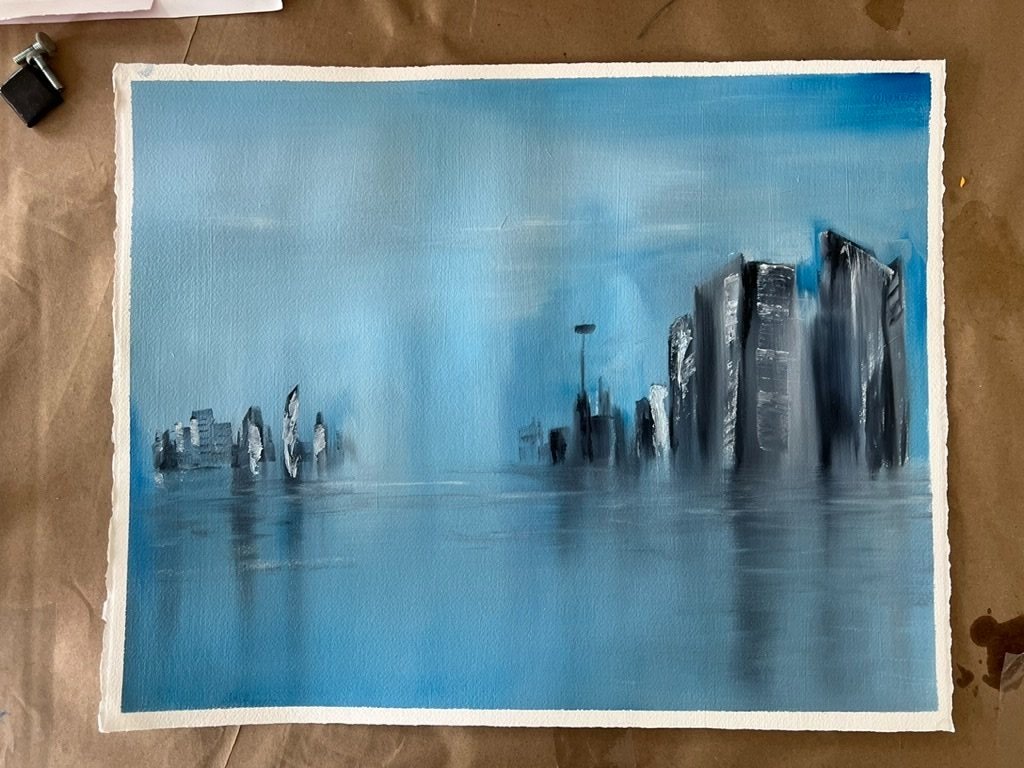

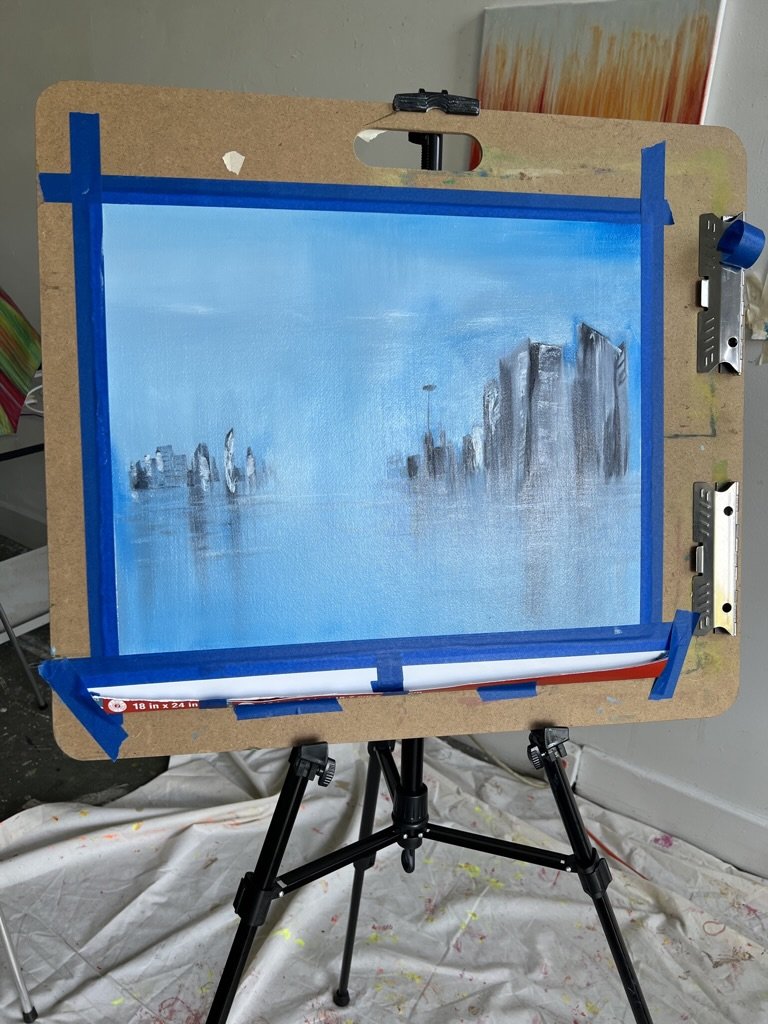
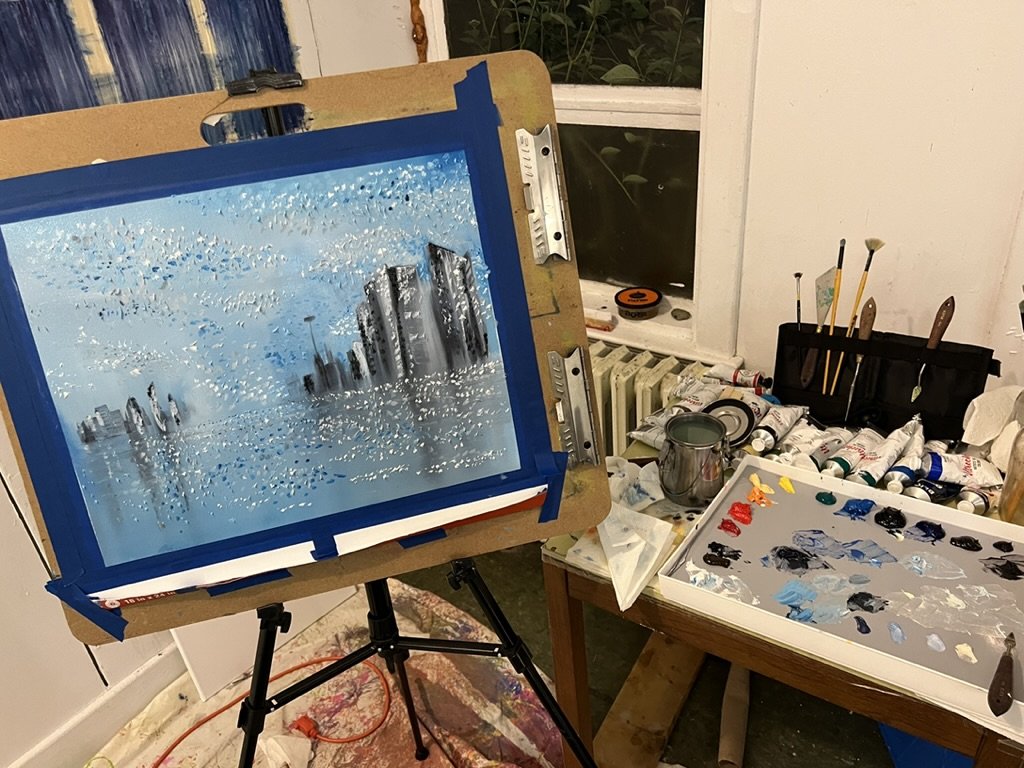
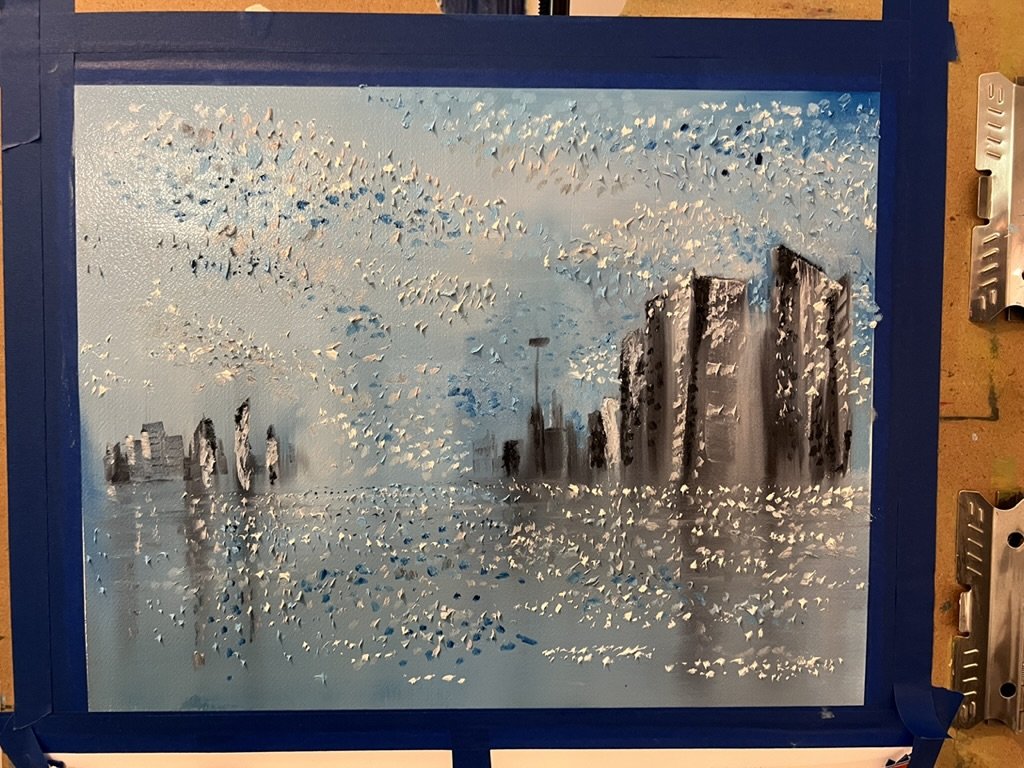
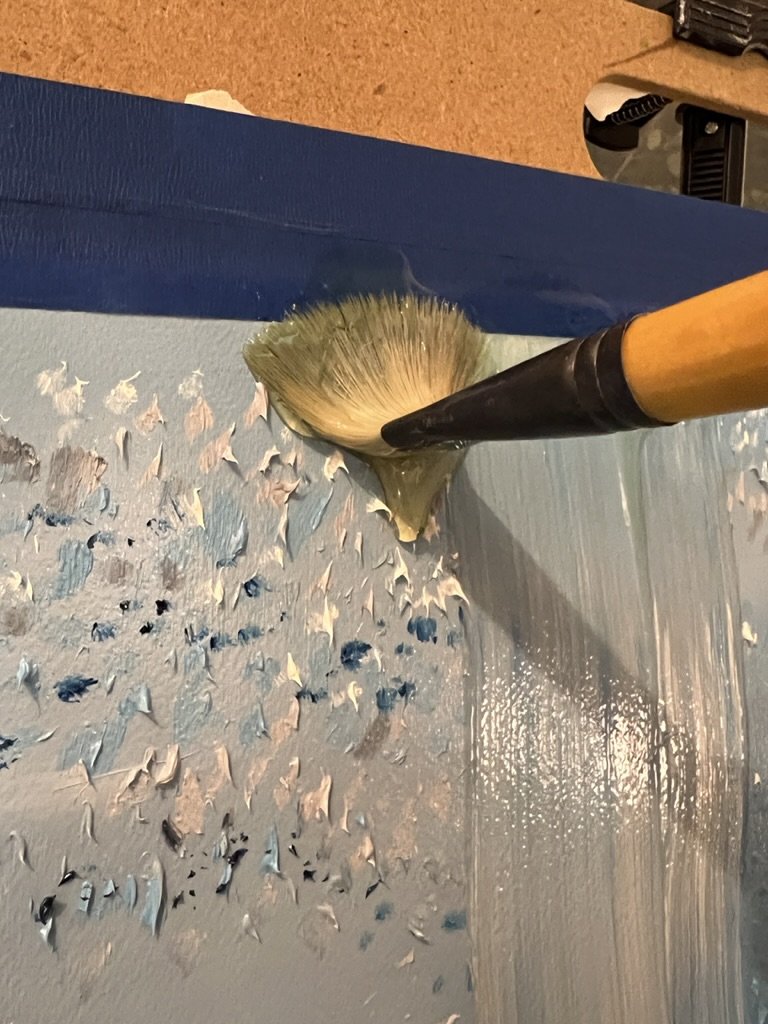
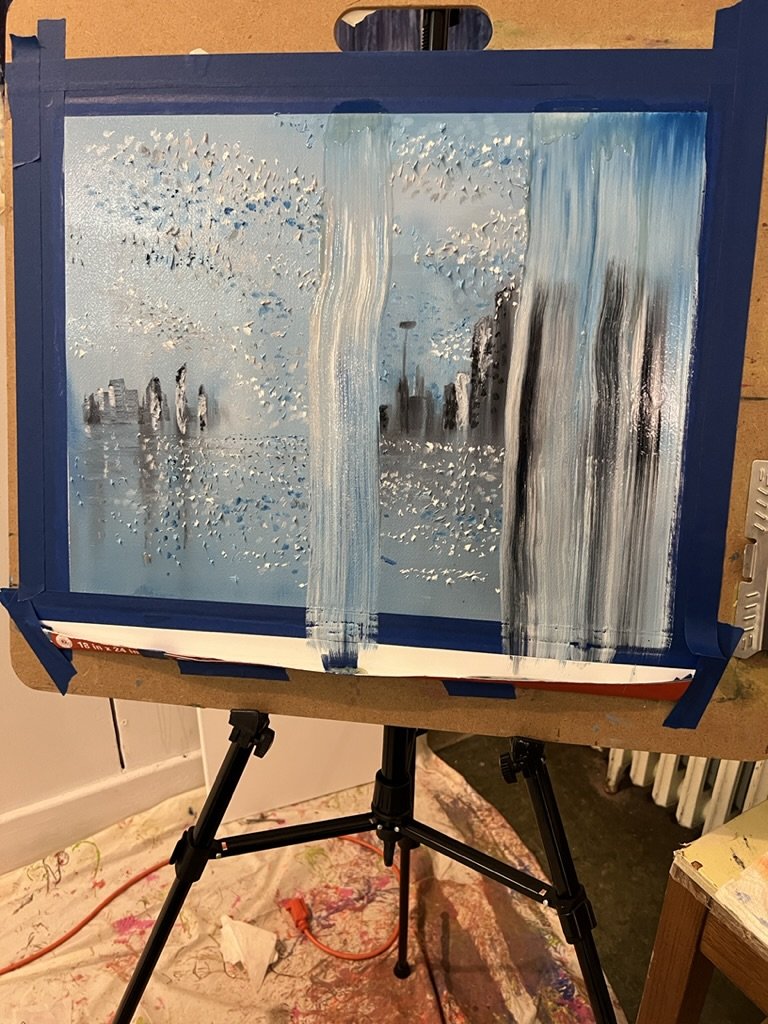
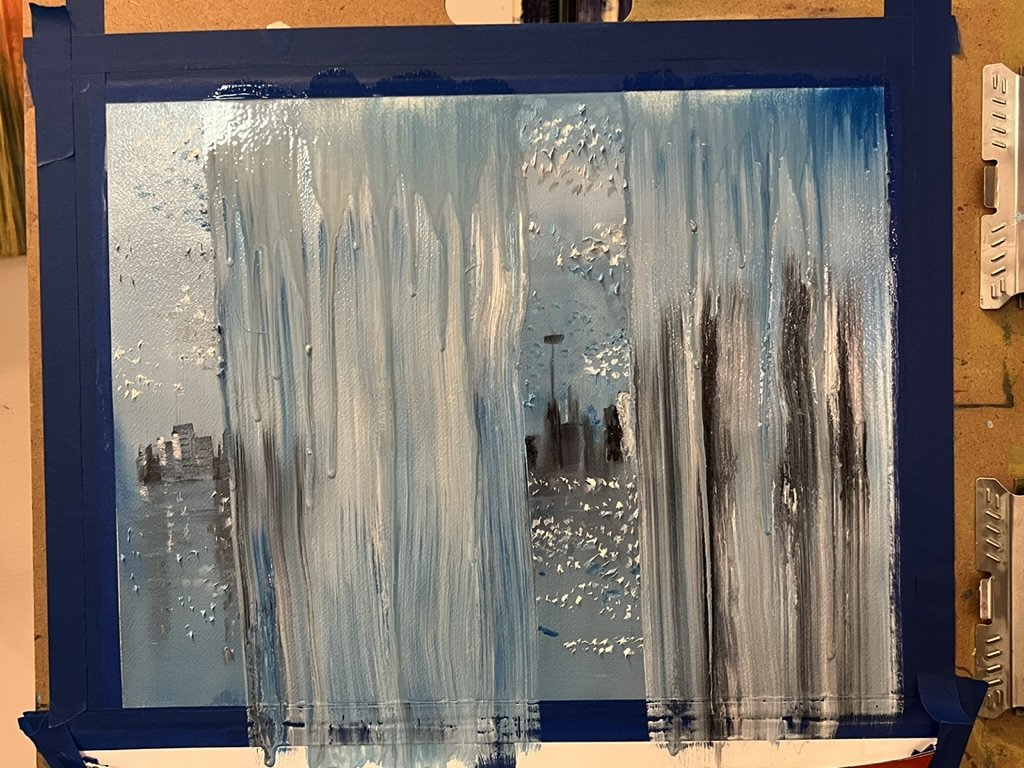
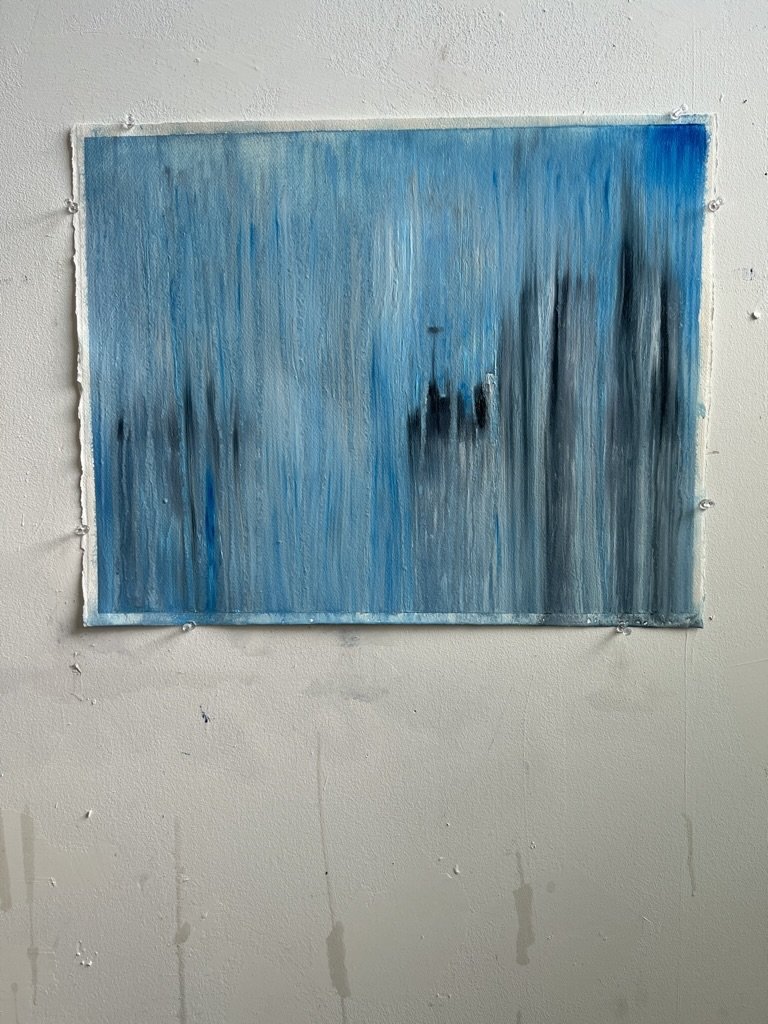
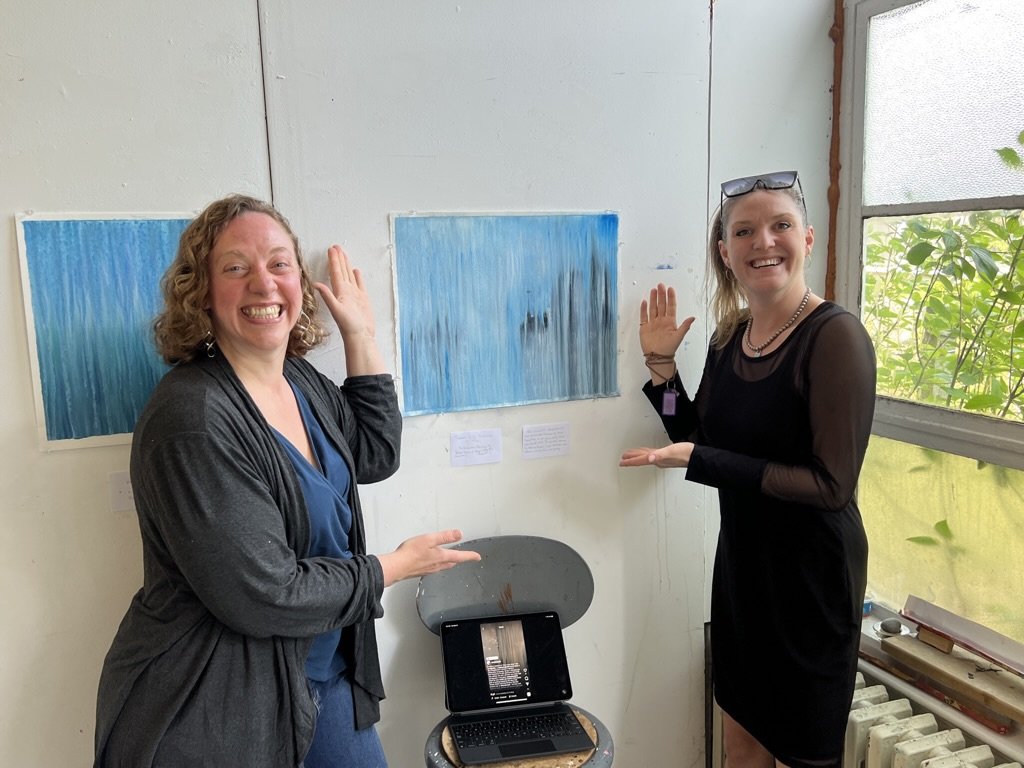
On the first days of the residency, another artist and I created lakescapes in a similar palette, mine in oil and rain, and hers in acrylic. I knew immediately it would be very interesting if we found a way to co-create something in collaboration, somehow.
So this other artist (Skye Skagfeld) created a cityscape of Toronto inspired by the view from the ferry using palette knife and a blue & payne’s gray color palette, then handed it over to me to do my rain thing. She gave it to me with trust that I would do my rain effect to it, which is brave and also very vulnerable, to give your creation to another artist to change and manipulate in their style. It was an emotional experience for both of us, as the whole process of “letting go” of a painting also brings up so many other layers of letting go.
For me, I felt an impending sense of responsibility. I wanted to do my rain thing to the painting as planned, but I also wanted to be sensitive to maintaining the key elements of the painting that made it Skye’s original creation. We had some really productive conversations about collaboration and creation through this process.
Sunrise Rain at the Lake
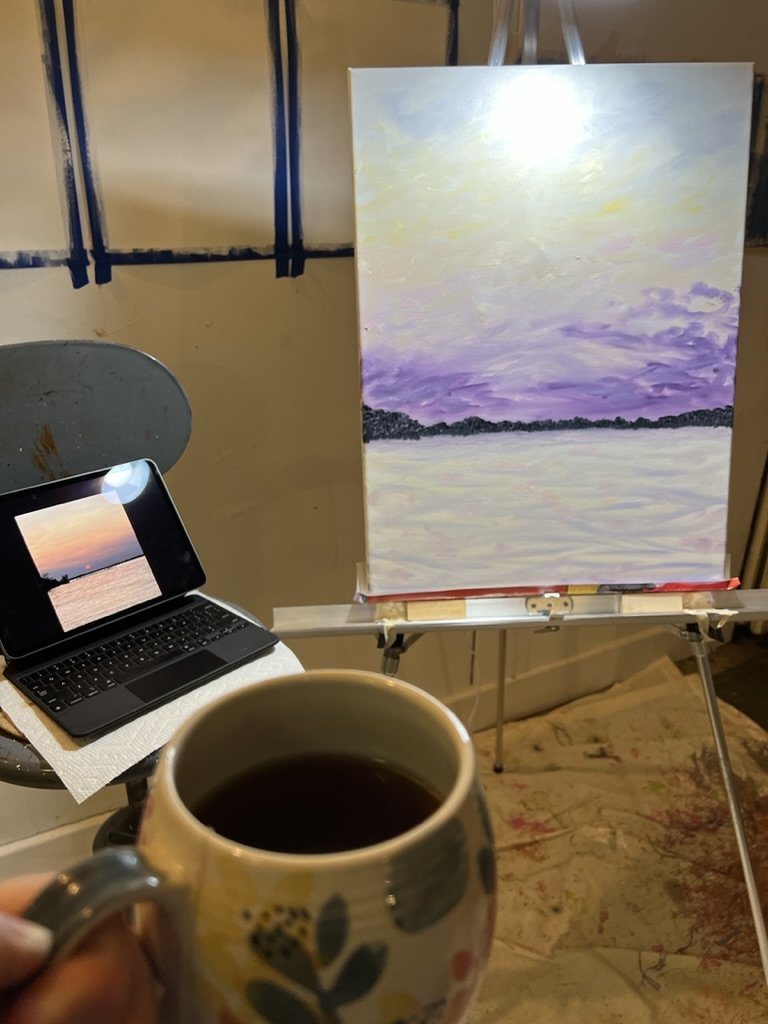

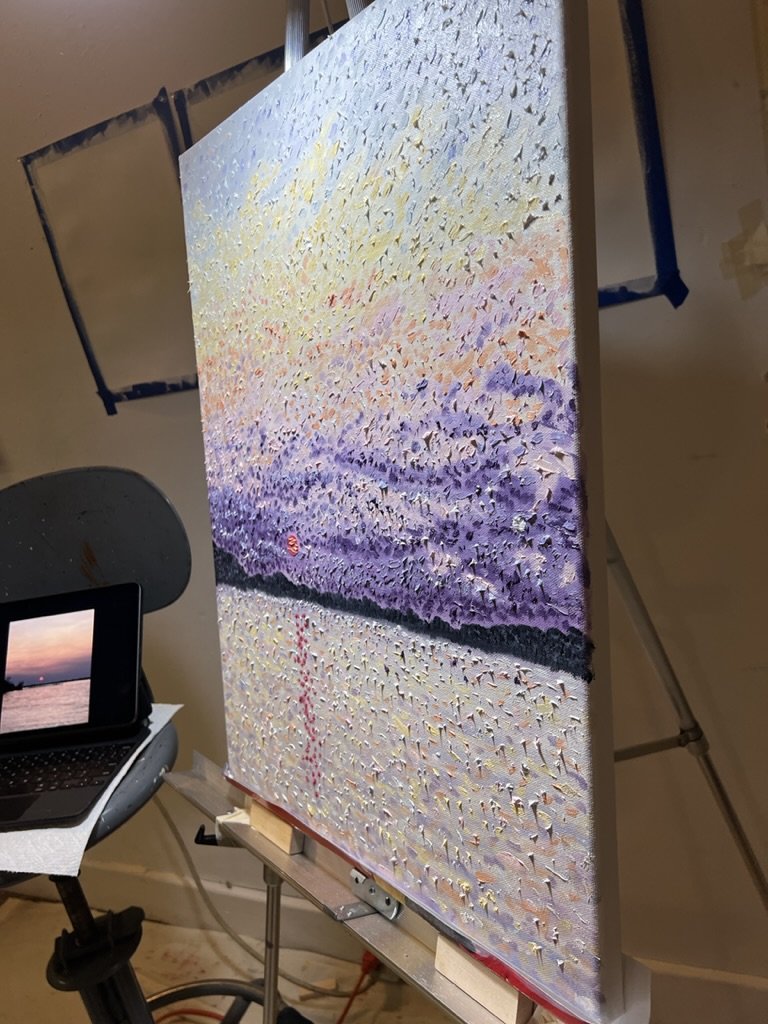
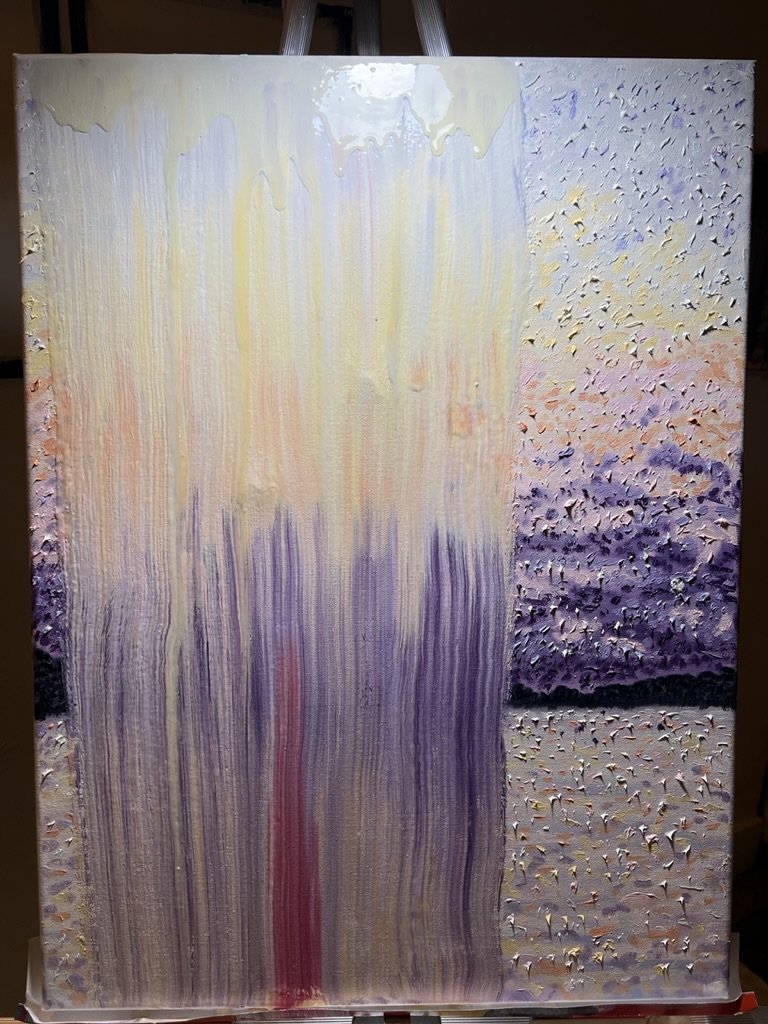

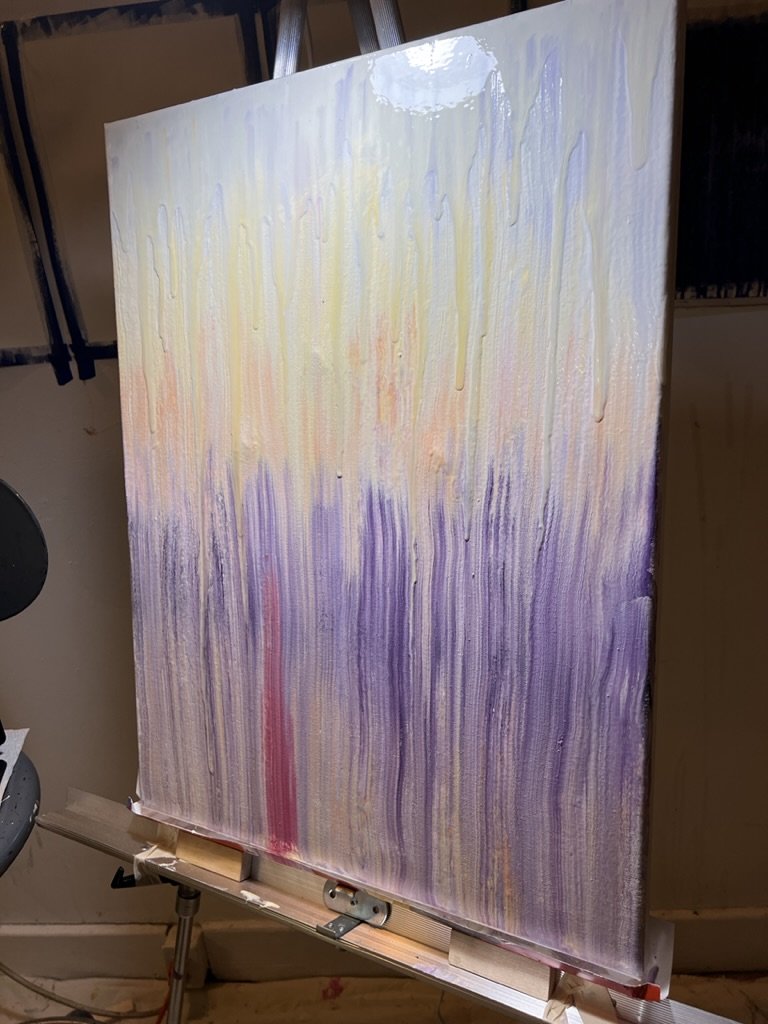
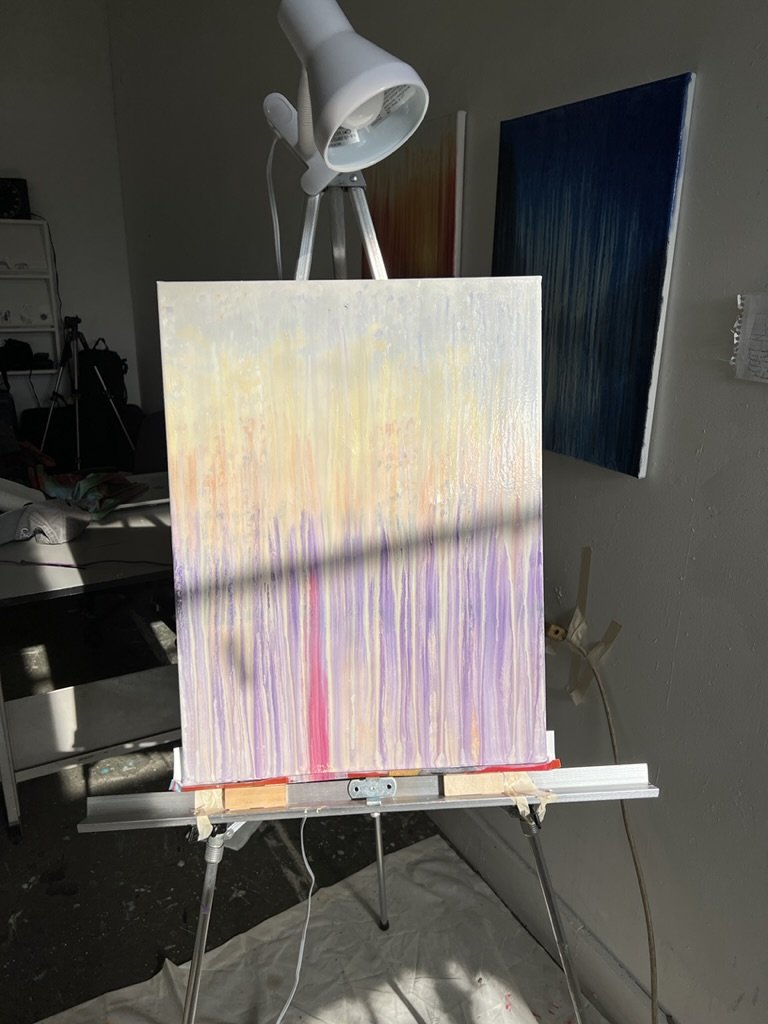

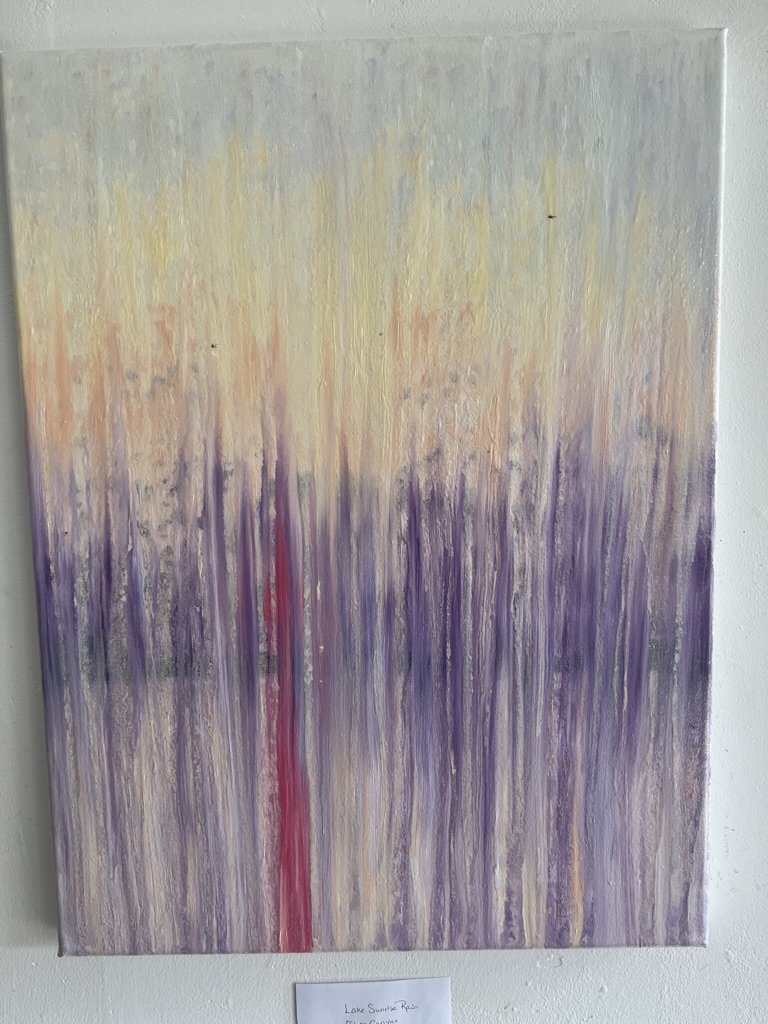
To gather the inspiration for this painting I got up at 5am one morning to try to catch the sunrise over Lake Ontario early enough. Just as the sun was coming up over the horizon, it was a magenta-pink color in an early cloud hazy of lilac purple sky. What intrigued me were the colors of peachy-coral-orange and the slightest blue-gray up at the top of the sky, as the sky transitioned from night to morning.
This painting didn’t break any giant barriers in experimentation, but I did want to play around a bit with these color combinations, and overall I was generally pleased with how it turned out.
Narrative panels, rainfall and flooding
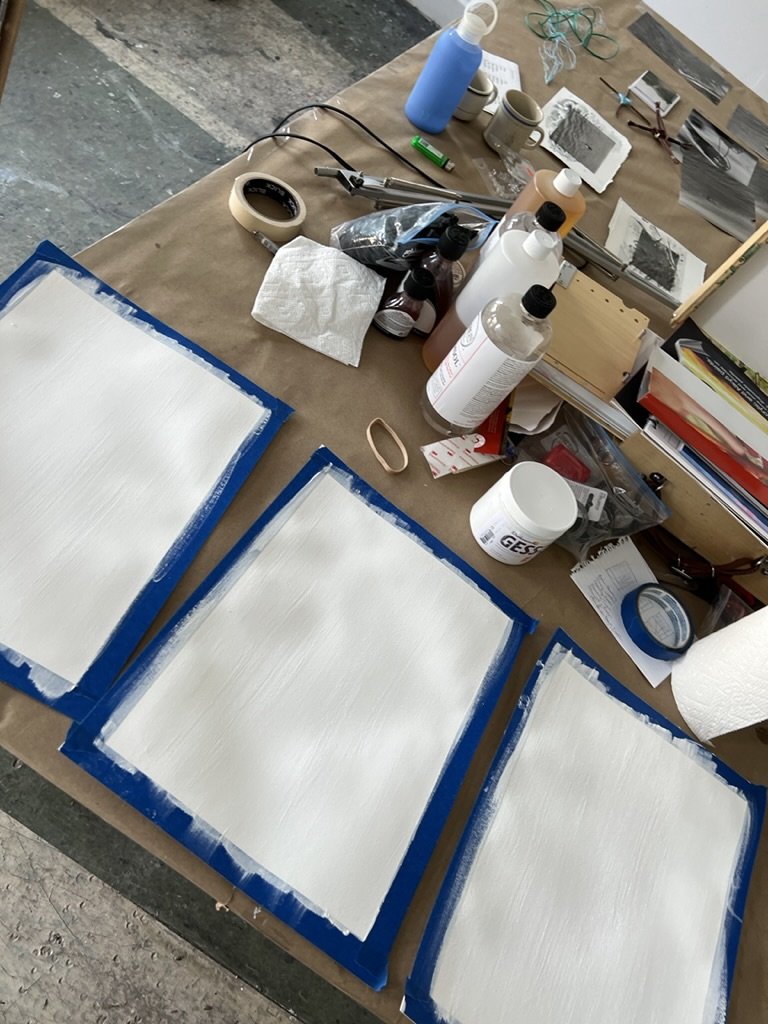
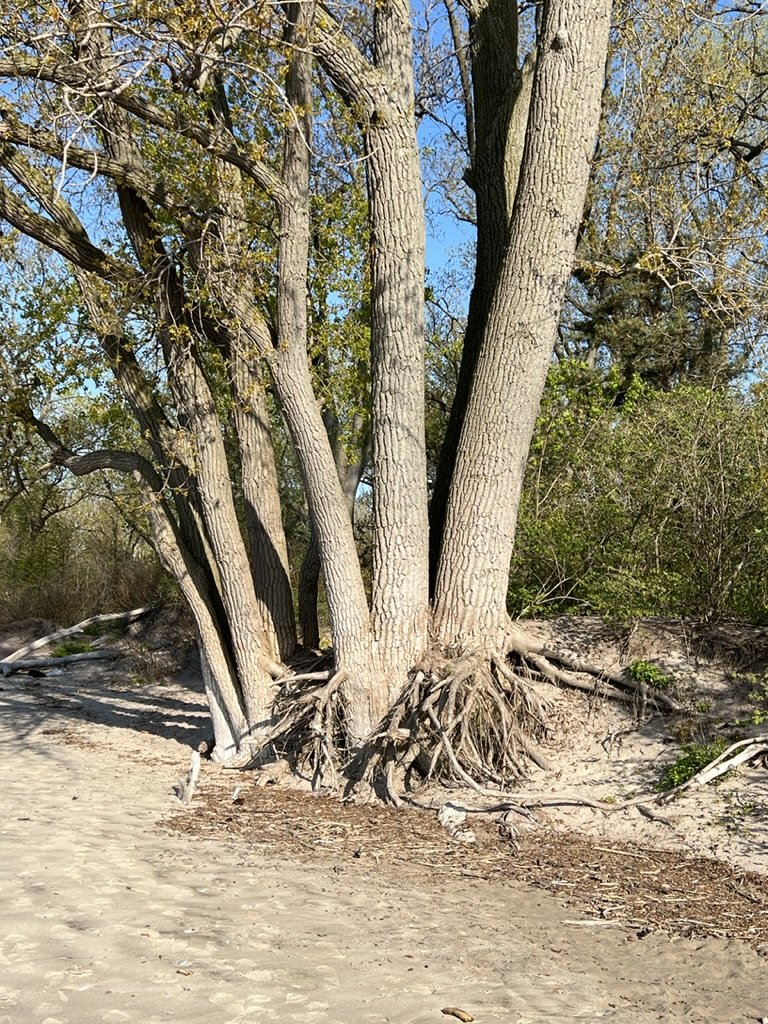
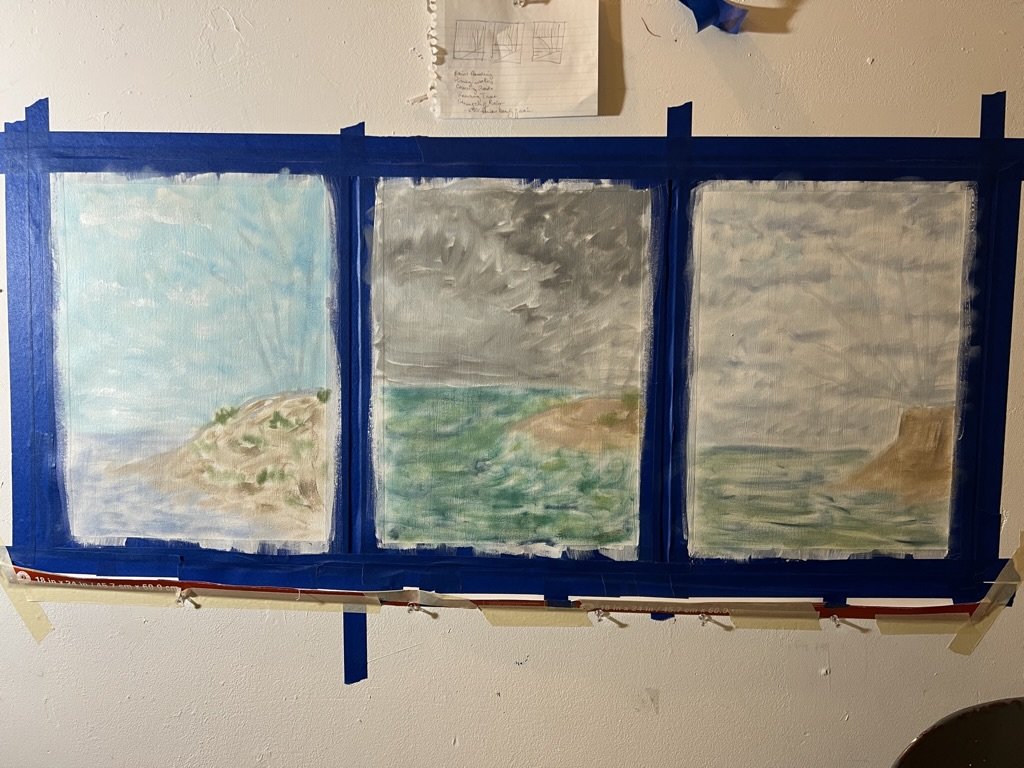
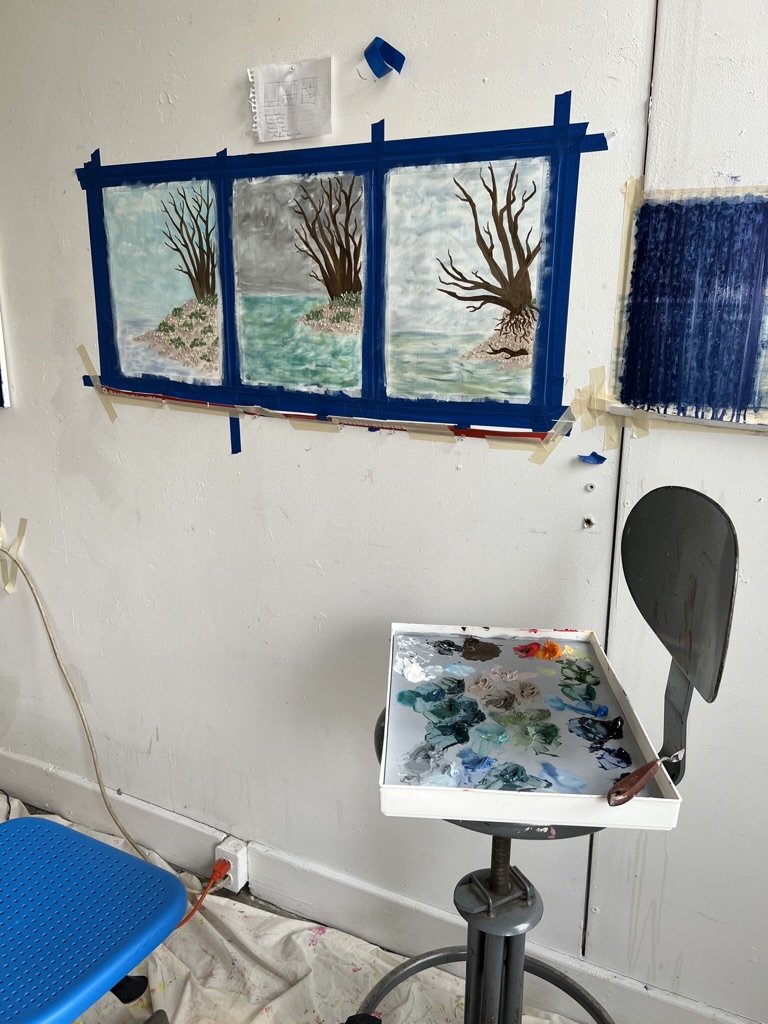
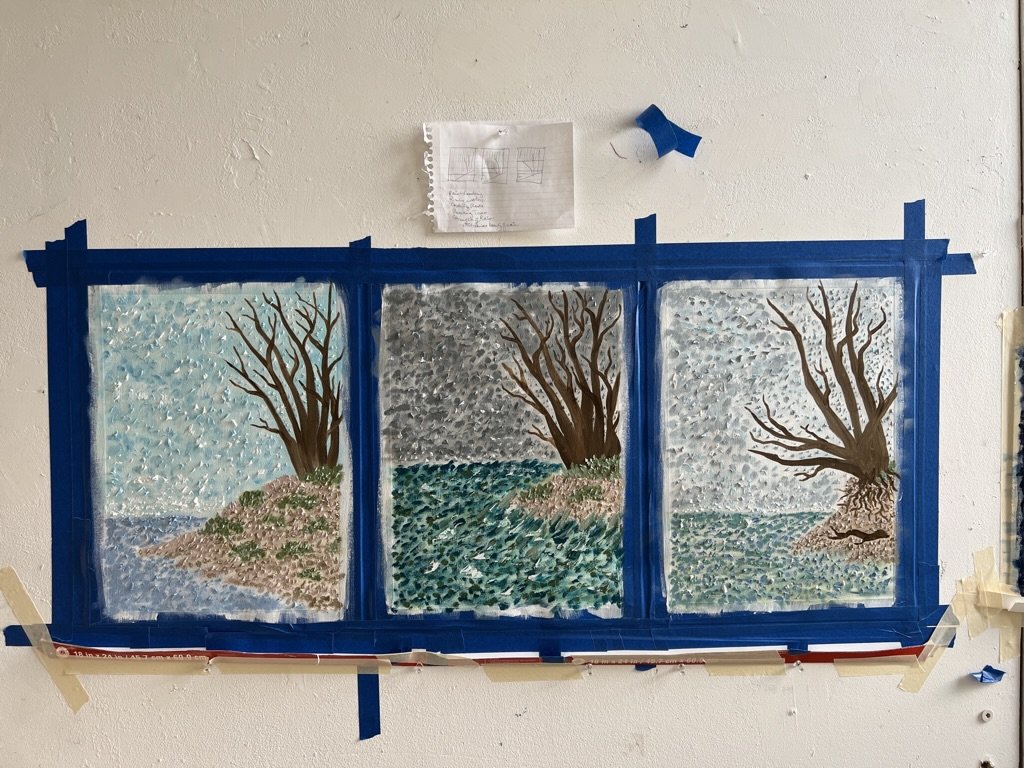
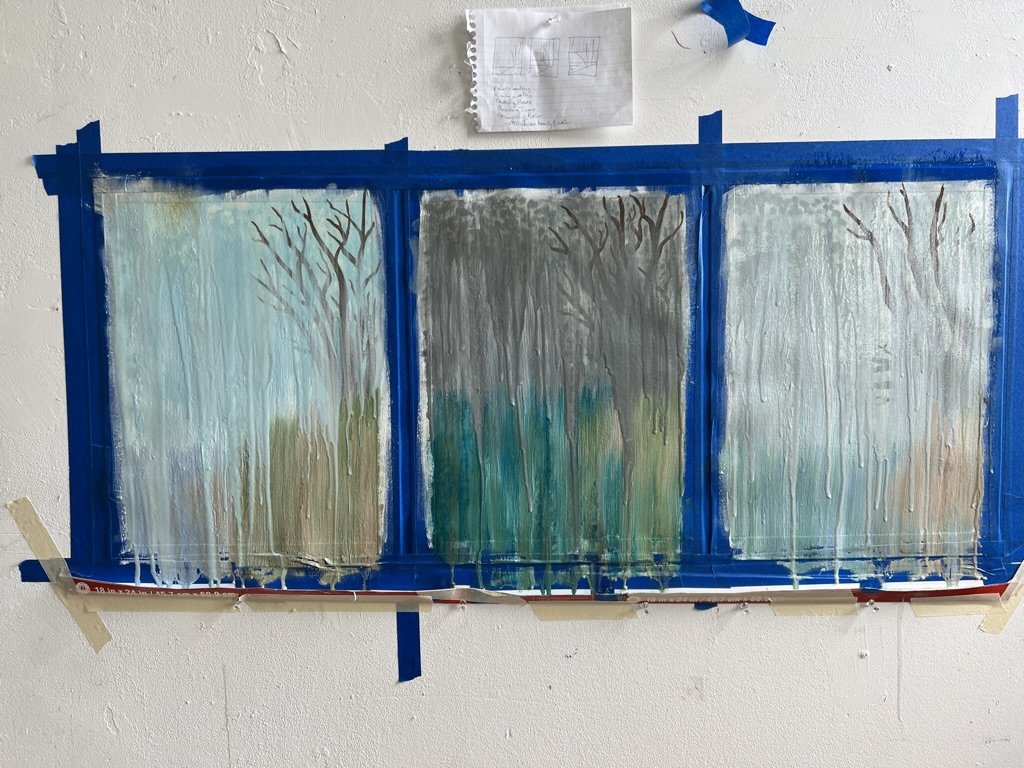


After a presentation by another former Once Upon Water artist (Stephanie Cloutier), I was inspired to think about rainfall and its impact on flooding and erosion and the changes of landscape that rainfall and flooding can cause. I usually don’t dive into these waters, but this is also an inevitable and another powerful side of rain which deems exploring and expressing.
There’s a specific grouping of tree trunks on the beach behind the residency, and when there was massive flooding several years ago, much of the sand and land by the tree was eroded, trees and trunks fell, and the roots became exposed to the elements. I wanted to do a small study on oil paint paper exploring the narrative of this tree, the floods, and the erosion resulting, along with mood and expression of pre-storm, during storm, and post-storm.
I’m not super thrilled with how they turned out, but I’m glad that I gave it a try. I think if I were to do it again, I’d try to do it earlier in the residency, towards the end I was losing a little steam for new ideas and execution, and I would pay closer attention to the raining bit of the project. I completed this one of my last days just before our final critique, and I feel that I could have executed this concept more successfully if under other conditions in the future.
I ran out of packing room to bring these sketches back with me, and they were still super wet paint, so I documented them, then ditched them.
One thing I did learn from using these is that the paint and oil motion of the rain technique did flow much better on gessoed oil paint paper, in order to reduce tooth and brush drag.
Conclusions, Thoughts & New Ideas Still
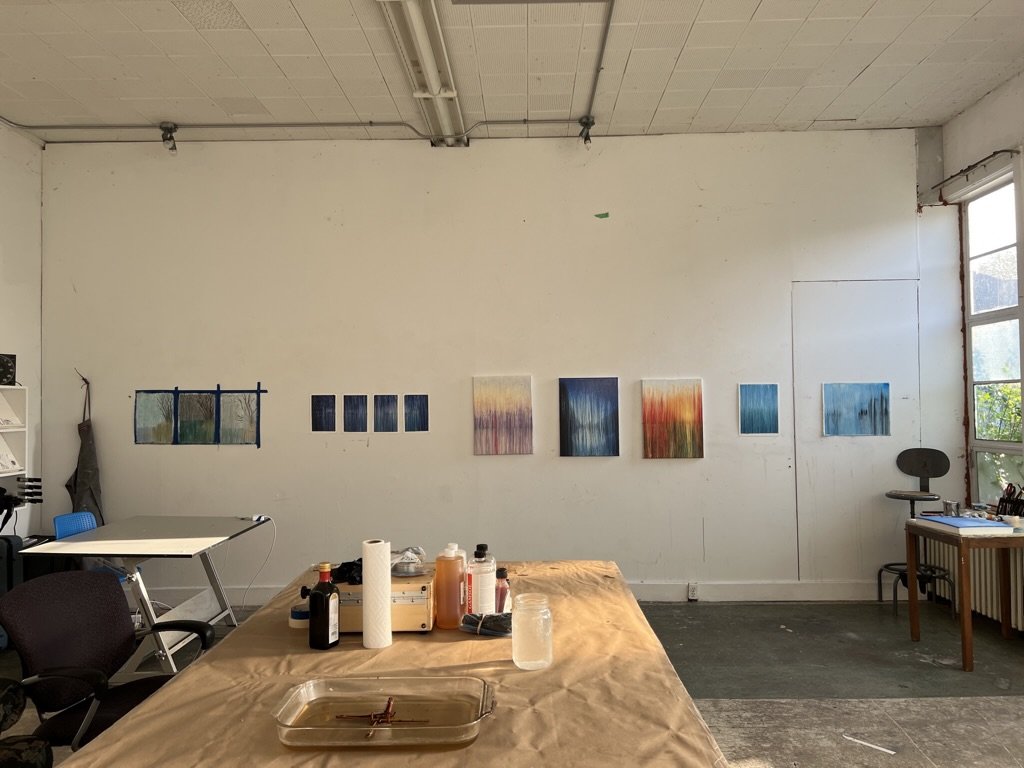
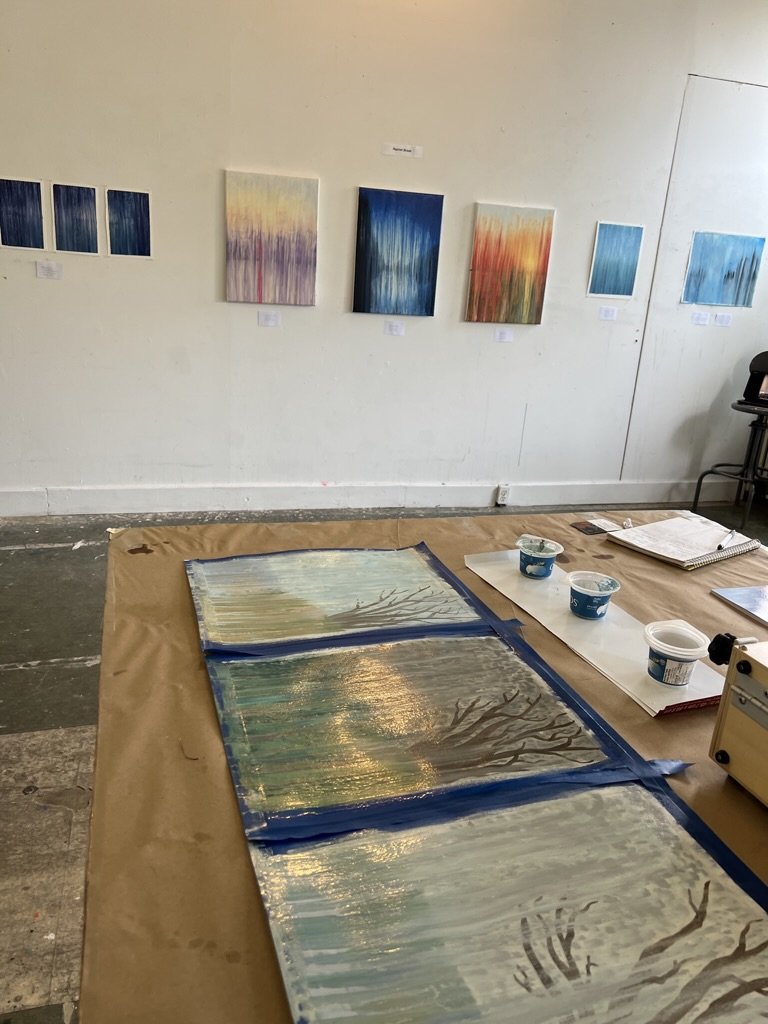

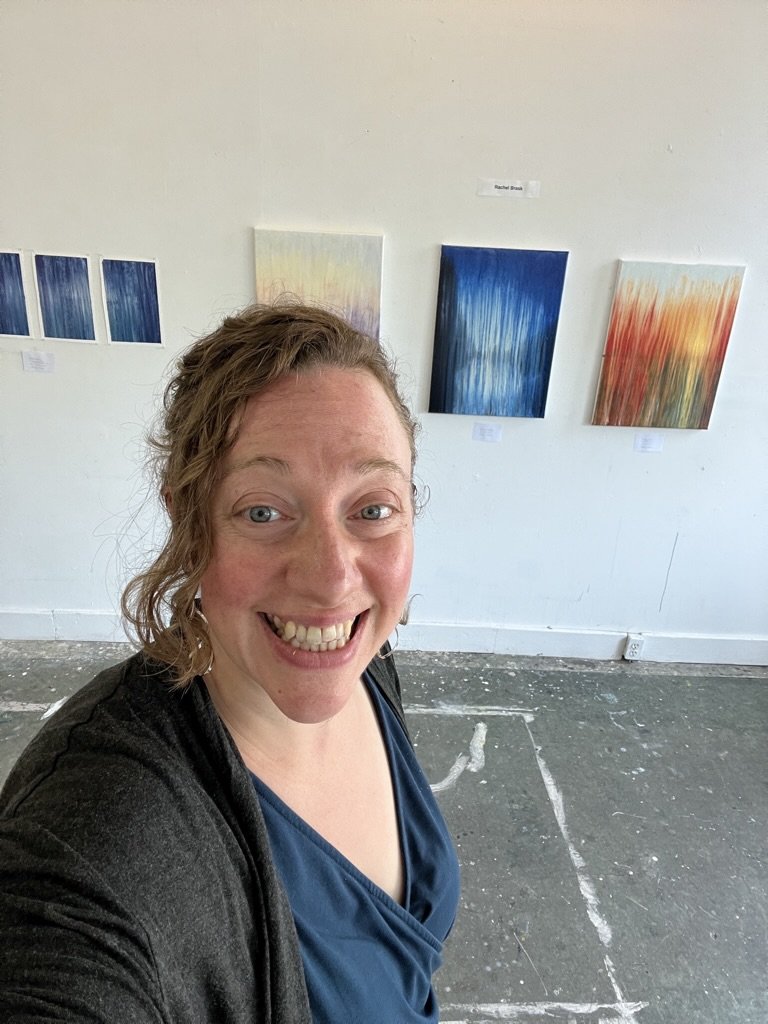
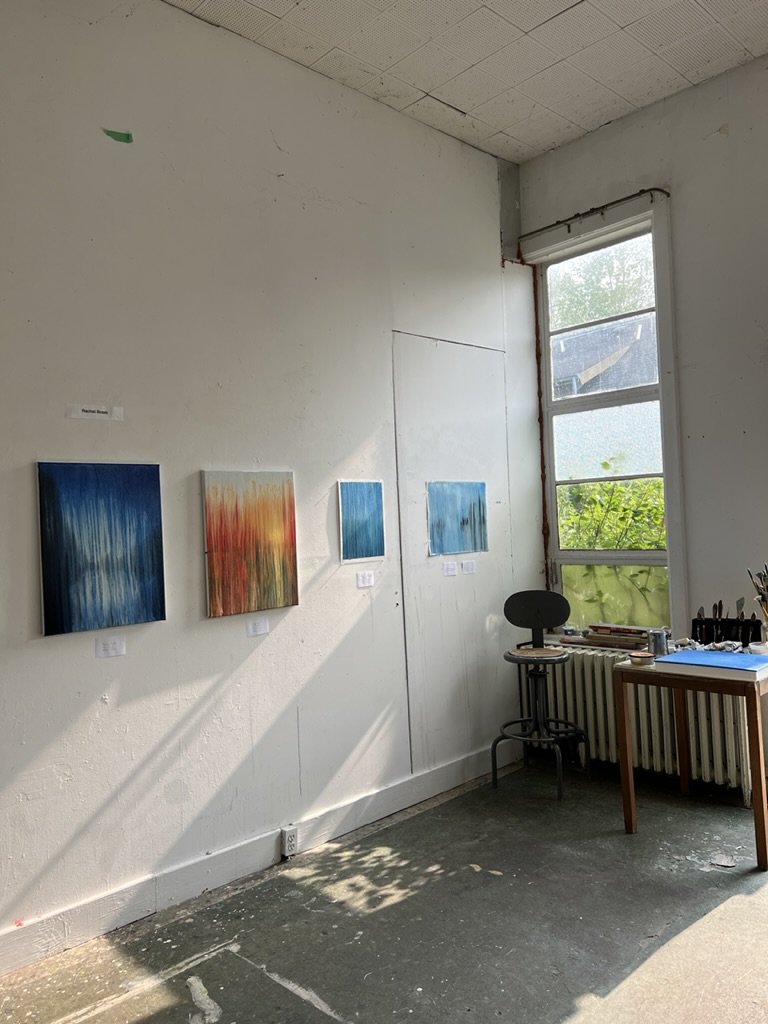
Some takeaways from these experimentations:
if using oil paint paper, gesso it first if doing my rain thing
slow down and observe more
build in more time to play and experiment: I’ve been so very focused on building my art business in all its forms that I’ve missed being artsy just to be artsy, to craft new ideas just for the sake of trying them. Going forward, I need to build in "play time & exploration” in my studio practice more regularly, because this is where new ideas and innovations happen
work in more multi-panel compositions on bigger canvases - I really enjoyed the look and the process of the multi-panel works
natural materials are good to try out for dragging the oil in my work - but for finished works, I’m going to stick with my paintbrush
still debating ideas for what to do with extra pigmented oil runoff from each painting - now that I’ve tried a catchment system, what to do with it?
I’ve underestimated the joy of being able to just tack up paper on studio walls for working. My current studio setup isn’t most conducive to this, so using the walls was a nice and new angle.
Other questions to ponder: what would a “heavy rain” vs. a “light rain” look like through my painting method?
Imagine masking or leaving some areas clear of “rain”
continue to explore the darker, evening/dusk last-light rainy reflections as an upcoming series
I also took time to take out my dSLR again to slow down, observe and photograph potential reference images for another time
